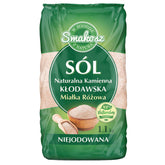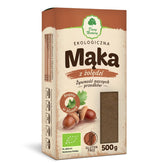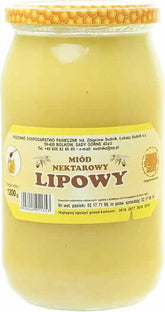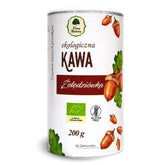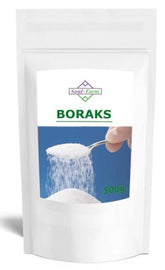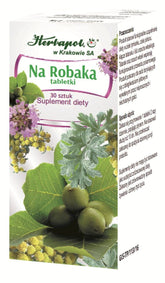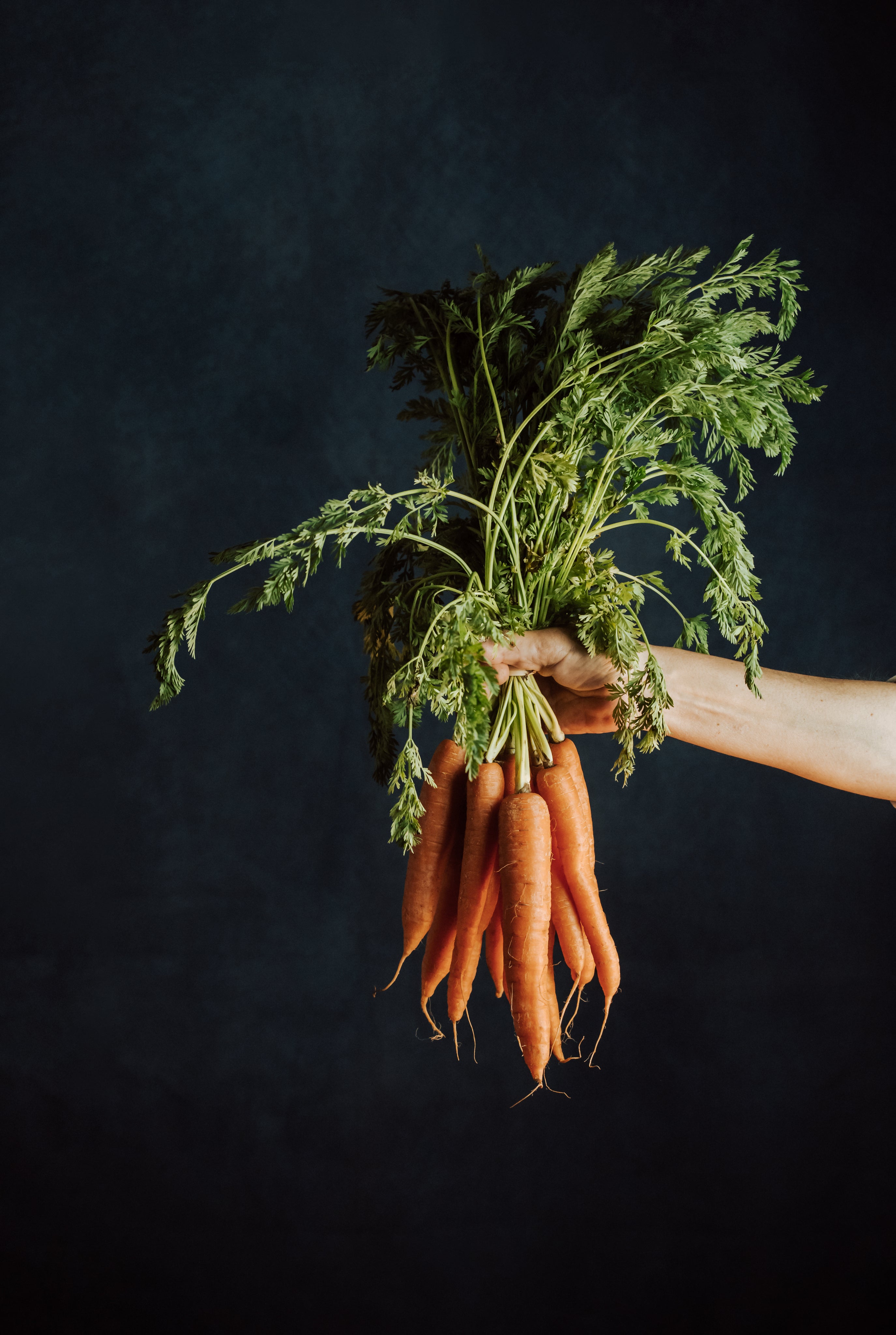Available 24/7
Popular products
Salt from Kłodawa, natural stone, log, fine, not iodised 1 kg SMAKOSZ
- €2,87
€5,38- €2,87
- Unit price
- / per
Gluten-free acorn flour ORGANIC 500 g - GIFTS OF NATURE
- €6,28
€7,88- €6,28
- Unit price
- / per
Linden honey 1200g SUDNIK
- €11,95
- €11,95
- Unit price
- / per
Herbal mixture against parasites 100g FLOS
- €5,12
- €5,12
- Unit price
- / per
Gluten-free organic dandelion root coffee 200 g - GIFTS OF NATURE
- €11,95
- €11,95
- Unit price
- / per
ORGANIC Acorn Coffee 200 g - GIFTS OF NATURE
- €8,43
- €8,43
- Unit price
- / per
Borax 500g SOULFARM
- €5,39
- €5,39
- Unit price
- / per
30 tabs per worm. HERBAPOL
- €4,50
- €4,50
- Unit price
- / per
Currency
 AED
AED
 AFN
AFN
 ALL
ALL
 AMD
AMD
 ANG
ANG
 AUD
AUD
 AWG
AWG
 AZN
AZN
 BAM
BAM
 BBD
BBD
 BDT
BDT
 BGN
BGN
 BIF
BIF
 BND
BND
 BOB
BOB
 BSD
BSD
 BWP
BWP
 BZD
BZD
 CAD
CAD
 CDF
CDF
 CHF
CHF
 CLP
CLP
 CNY
CNY
 CRC
CRC
 CVE
CVE
 CZK
CZK
 DJF
DJF
 DKK
DKK
 DOP
DOP
 DZD
DZD
 EGP
EGP
 ETB
ETB
 EUR
EUR
 FJD
FJD
 FKP
FKP
 GBP
GBP
 GMD
GMD
 GNF
GNF
 GTQ
GTQ
 GYD
GYD
 HKD
HKD
 HNL
HNL
 HUF
HUF
 IDR
IDR
 ILS
ILS
 INR
INR
 ISK
ISK
 JMD
JMD
 JPY
JPY
 KES
KES
 KGS
KGS
 KMF
KMF
 KRW
KRW
 KYD
KYD
 KZT
KZT
 LBP
LBP
 LKR
LKR
 MAD
MAD
 MDL
MDL
 MKD
MKD
 MMK
MMK
 MNT
MNT
 MUR
MUR
 MVR
MVR
 MWK
MWK
 NGN
NGN
 NIO
NIO
 NOK
NOK
 NPR
NPR
 NZD
NZD
 PEN
PEN
 PGK
PGK
 PKR
PKR
 PYG
PYG
 QAR
QAR
 RON
RON
 RSD
RSD
 RWF
RWF
 SAR
SAR
 SBD
SBD
 SEK
SEK
 SGD
SGD
 SHP
SHP
 SLL
SLL
 STD
STD
 TJS
TJS
 TOP
TOP
 TRY
TRY
 TTD
TTD
 TZS
TZS
 UAH
UAH
 UGX
UGX
 USD
USD
 UYU
UYU
 UZS
UZS
 VND
VND
 VUV
VUV
 WST
WST
 XAF
XAF
 XCD
XCD
 XOF
XOF
 XPF
XPF
 YER
YER
 ZAR
ZAR
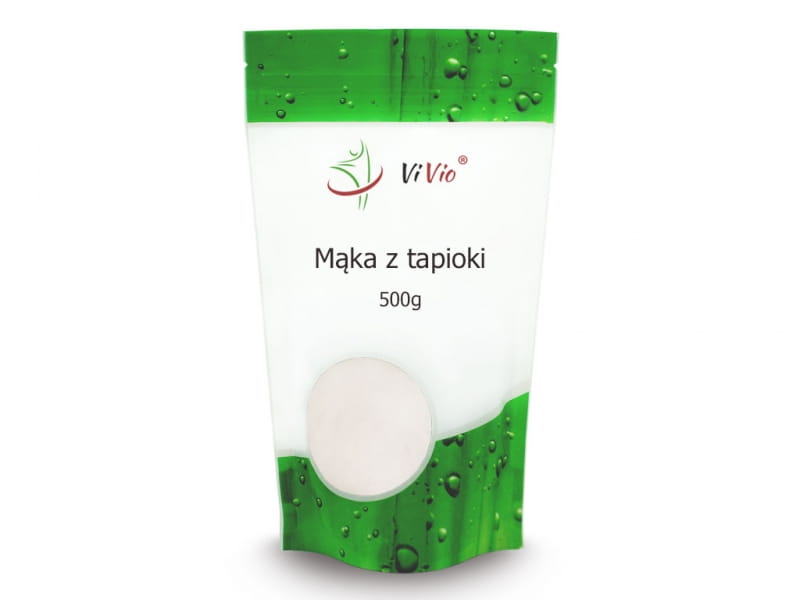
Tapioca Flour 500g - VIVIO
- €4,71
- €4,71
- Unit price
- / per
Free Shipping
Free shipping depending on the country – see our price list .
🚚 Fast and reliable delivery – national and international by land or express air shipping 📦
In our international shipping price lists for land and express air shipping ✅, covering many countries and currencies, you will find:
- Available thresholds for free shipping 🎁
- Estimated delivery times for land and air shipping (Express) 📆
- Shipping costs in EUR, USD, CHF, GBP and many other currencies 💱
- Information about shipping providers such as DHL, UPS, FedEx 🚛
📩 Questions? Write to us: kontakt@biogo.de
* Delivery times and thresholds for free shipping are displayed by default on the product page and in the shopping cart for Germany (land shipping).
* All prices are quoted in the respective local currency and are based on the current exchange rate.
🚚 Shipping price list (land shipping)
| Land | Carrier | Delivery time (tags) |
Free Shipping |
0 – 1 kg | 1 – 3 kg | 3 – 5 kg | 5 – 10 kg | 10 – 20 kg | 20 – 32 kg | 32 and more |
|---|---|---|---|---|---|---|---|---|---|---|
| Austria | DHL | 2–3 | from 99 € | 9.99€ | 10.99€ | 11.99€ | 14.99€ | 17.99€ | 19.99€ | 19.99€ |
| Belgium | DHL | 2 | from 99 € | 10.99€ | 11.99€ | 12.99€ | 15.99€ | 19.99€ | 26.99€ | 26.99€ |
| Bulgaria | DHL/UPS | 5 | from 189 BGN | 19.99 BGN | 23.99 BGN | 23.99 BGN | 27.99 BGN | 43.99 BGN | 53.99 BGN | 53.99 BGN |
| Cyprus | UPS | 10 | from 199 € | 14.99€ | 16.99€ | 16.99€ | 26.99€ | 33.99€ | 39,99€ | 39,99€ |
| Czech Republic | DHL | 2 | from 2469 CZK | 253.99 CZK | 253.99 CZK | 304.99 CZK | 355.99 CZK | 558.99 CZK | 685.99 CZK | 685.99 CZK |
| Germany | DHL | 1-2 | from 99 € | 6,99 € | 6,99 € | 6,99 € | 6,99 € | 6,99 € | 6,99 € | 6,99 € |
| Denmark | DHL | 3–4 | from 739 DKK | 68.99 DKK | 83.99 DKK | 83.99 DKK | 106.99 DKK | 129.99 DKK | 152.99 DKK | 152.99 DKK |
| Estonia | DHL | 4–5 | from 99 € | 6,99 € | 6,99 € | 7,99 € | 9,99 € | 11,99 € | 12,99 € | 12,99 € |
| Spain | DHL/UPS | 3–4 | from 99 € | 12.99€ | 12.99€ | 13.99€ | 19.99€ | 24,99€ | 29.99€ | 29.99€ |
| Finland | DHL | 5 | from 99 € | 11.99€ | 12.99€ | 13.99€ | 16.99€ | 19.99€ | 27.99€ | 27.99€ |
| France | DHL/UPS | 2–3 | from 99 € | 9.99€ | 11.99€ | 11.99€ | 14.99€ | 21.99€ | 26.99€ | 26.99€ |
| United Kingdom | DHL | 4 | from 169 GBP | 14.99 GBP | 16.99 GBP | 16.99 GBP | 17.99 GBP | 34.99 GBP | 42.99 GBP | 42.99 GBP |
| Greece | DHL | 7 | from 99 € | 9.99€ | 12.99€ | 12.99€ | 15.99€ | 23.99€ | 28.99€ | 28.99€ |
| Croatia | DHL | 4–5 | from 99 € | 9.99€ | 11.99€ | 11.99€ | 14.99€ | 23.99€ | 29.99€ | 29.99€ |
| Hungary | DHL | 3–4 | from 39899 HUF | 3286.99 HUF | 4109.99 HUF | 4109.99 HUF | 5343.99 HUF | 5755.99 HUF | 6166.99 HUF | 6166.99 HUF |
| Ireland | DHL/UPS | 4 | from 99 € | 9,99 € | 11,99 € | 11,99 € | 14,99 € | 23,99 € | 29,99 € | 29,99 € |
| Italy | DHL | 3 | from 99 € | 9.99€ | 11.99€ | 11.99€ | 13.99€ | 17.99€ | 19.99€ | 19.99€ |
| Lithuania | DHL | 2–3 | from 69 € | 8.99€ | 10.99€ | 10.99€ | 11.99€ | 12.99€ | 13.99€ | 13.99€ |
| Luxembourg | DHL/UPS | 2–3 | from 99 € | 9.99€ | 11.99€ | 11.99€ | 14.99€ | 22.99€ | 24,99€ | 24,99€ |
| Latvia | DHL | 3–4 | from 69 € | 8.99€ | 10.99€ | 10.99€ | 11.99€ | 12.99€ | 13.99€ | 13.99€ |
| Netherlands | DHL | 2 | from 99 € | 9.99€ | 10.99€ | 10.99€ | 13.99€ | 14.99€ | 19.99€ | 19.99€ |
| Portugal | DHL/UPS | 4–5 | from 99 € | 9.99€ | 11.99€ | 11.99€ | 15.99€ | 22.99€ | 29.99€ | 29.99€ |
| Romania | DHL/UPS | 3–4 | from 499 RON | 46.99 RON | 57.99 RON | 57.99 RON | 72.99 RON | 114.99 RON | 145.99 RON | 145.99 RON |
| Sweden | DHL/UPS | 3–4 | from 89 SEK | 110.99 SEK | 133.99 SEK | 133.99 SEK | 166.99 SEK | 222.99 SEK | 333.99 SEK | 333.99 SEK |
| Slovenia | DHL/UPS | 3–4 | from 99 € | 9.99€ | 11.99€ | 11.99€ | 14.99€ | 24,99€ | 29.99€ | 29.99€ |
| Slovakia | DHL | 2 | from 99 € | 9.99€ | 11.99€ | 11.99€ | 14.99€ | 24,99€ | 29.99€ | 29.99€ |
| Switzerland | FEDEX | 3 | from 189 CHF | 21.99 CHF | 23.99 CHF | 23.99 CHF | 31.99 CHF | 36.99 CHF | 38.99 CHF | 38.99 CHF |
| Norway | FEDEX | 4 | from 2299 NOK | 68.99 NOK | 83.99 NOK | 83.99 NOK | 106.99 NOK | 129.99 NOK | 152.99 NOK | 152.99 NOK |
✈️ Express shipping price list (air freight)
| Land | Carrier | Delivery time (days) |
0–1 kg | 1–3 kg | 3–5 kg | 5–10 kg | 10–20 kg | 20–30 kg | 30–40 kg | 40–60 kg | 60–70 kg |
|---|---|---|---|---|---|---|---|---|---|---|---|
| Albania | FEDEX | 5–7 | 12.99 € | 13.99 € | 19.99 € | 24.99 € | 87.99 € | 166.99 € | 193.99 € | 253.99 € | 316.99 € |
| Algeria | FEDEX | 1 | 25.99 € | 25.99 € | 31.99 € | 37.99 € | 84.99 € | 148.99 € | 171.99 € | 253.99 € | 324.99 € |
| American Samoa | FEDEX | 3 | 42.99 € | 69.99 € | 93.99 € | 131.99 € | 398.99 € | 501.99 € | 591.99 € | 777.99 € | 1008.99 € |
| Andorra | FEDEX | 5–7 | 10.99 € | 10.99 € | 14.99 € | 20.99 € | 53.99 € | 138.99 € | 163.99 € | 215.99 € | 275.99 € |
| Afghanistan | FEDEX | 5–7 | 42.99 € | 69.99 € | 93.99 € | 131.99 € | 398.99 € | 501.99 € | 591.99 € | 777.99 € | 1008.99 € |
| Angola | FEDEX | 1 | 26.99 € | 26.99 € | 33.99 € | 40.99 € | 91.99 € | 181.99 € | 217.99 € | 349.99 € | 454.99 € |
| Anguilla | FEDEX | 5–7 | 26.99 € | 26.99 € | 33.99 € | 40.99 € | 91.99 € | 181.99 € | 217.99 € | 349.99 € | 454.99 € |
| Antigua/ Barbuda | FEDEX | 5–7 | 26.99 € | 26.99 € | 33.99 € | 40.99 € | 91.99 € | 181.99 € | 217.99 € | 349.99 € | 454.99 € |
| Argentina | FEDEX | 5–7 | 25.99 € | 25.99 € | 31.99 € | 37.99 € | 84.99 € | 148.99 € | 171.99 € | 253.99 € | 324.99 € |
| Armenia | FEDEX | 5–7 | 23.99 € | 23.99 € | 27.99 € | 31.99 € | 82.99 € | 144.99 € | 165.99 € | 241.99 € | 298.99 € |
| Aruba | FEDEX | 5–7 | 25.99 € | 25.99 € | 31.99 € | 37.99 € | 84.99 € | 148.99 € | 171.99 € | 253.99 € | 324.99 € |
| Australia | FEDEX | 5–7 | 68.99 AUD | 109.99 AUD | 146.99 AUD | 210.99 AUD | 414.99 AUD | 601.99 AUD | 695.99 AUD | 1048.99 AUD | 1281.99 AUD |
| Austria | FEDEX | 2 | 9,99 € | 10,99 € | 13,99 € | 19,99 € | 51,99 € | 131,99 € | 147,99 € | 201,99 € | 241,99 € |
| Azerbaijan | FEDEX | 1 | 23.99 € | 23.99 € | 27.99 € | 31.99 € | 82.99 € | 144.99 € | 165.99 € | 241.99 € | 298.99 € |
| Bahamas | FEDEX | 5–7 | 25.99 € | 25.99 € | 31.99 € | 37.99 € | 84.99 € | 148.99 € | 171.99 € | 253.99 € | 324.99 € |
| Bangladesh | FEDEX | 5–7 | 23.99 € | 23.99 € | 27.99 € | 31.99 € | 82.99 € | 144.99 € | 165.99 € | 241.99 € | 298.99 € |
| Barbados | FEDEX | 3 | 25.99 € | 25.99 € | 31.99 € | 37.99 € | 84.99 € | 148.99 € | 171.99 € | 253.99 € | 324.99 € |
| Belgium | FEDEX | 1 | 9.99 € | 10.99 € | 13.99 € | 19.99 € | 51.99 € | 131.99 € | 147.99 € | 201.99 € | 241.99 € |
| Belize | FEDEX | 1 | 25.99 € | 25.99 € | 31.99 € | 37.99 € | 84.99 € | 148.99 € | 171.99 € | 253.99 € | 324.99 € |
| Bermuda | FEDEX | 5–7 | 25.99 € | 25.99 € | 31.99 € | 37.99 € | 84.99 € | 148.99 € | 171.99 € | 253.99 € | 324.99 € |
| Bhutan | FEDEX | 5–7 | 23.99 € | 23.99 € | 27.99 € | 31.99 € | 82.99 € | 144.99 € | 165.99 € | 241.99 € | 298.99 € |
| Bolivia | FEDEX | 5–7 | 25.99 € | 25.99 € | 31.99 € | 37.99 € | 84.99 € | 148.99 € | 171.99 € | 253.99 € | 324.99 € |
| BES Islands | FEDEX | 4 | 25.99 € | 25.99 € | 31.99 € | 37.99 € | 84.99 € | 148.99 € | 171.99 € | 253.99 € | 324.99 € |
| Bosnia and Herzegovina | FEDEX | 5–7 | 12.99 € | 13.99 € | 19.99 € | 24.99 € | 87.99 € | 166.99 € | 193.99 € | 253.99 € | 316.99 € |
| Botswana | FEDEX | 5–7 | 26.99 € | 26.99 € | 33.99 € | 40.99 € | 91.99 € | 181.99 € | 217.99 € | 349.99 € | 454.99 € |
| Brazil | FEDEX | 5–7 | 25.99 € | 25.99 € | 31.99 € | 37.99 € | 84.99 € | 148.99 € | 171.99 € | 253.99 € | 324.99 € |
| British Virgin Islands | FEDEX | 5–7 | 25.99 € | 25.99 € | 31.99 € | 37.99 € | 84.99 € | 148.99 € | 171.99 € | 253.99 € | 324.99 € |
| Brunei | FEDEX | 5–7 | 23.99 € | 23.99 € | 27.99 € | 31.99 € | 82.99 € | 144.99 € | 165.99 € | 241.99 € | 298.99 € |
| Bulgaria | FEDEX | 5–7 | 21.99 BGN | 21.99 BGN | 29.99 BGN | 41.99 BGN | 106.99 BGN | 275.99 BGN | 324.99 BGN | 427.99 BGN | 546.99 BGN |
| Burkina Faso | FEDEX | 1 | 26.99 € | 26.99 € | 33.99 € | 40.99 € | 91.99 € | 181.99 € | 217.99 € | 349.99 € | 454.99 € |
| Burundi | FEDEX | 5–7 | 26.99 € | 26.99 € | 33.99 € | 40.99 € | 91.99 € | 181.99 € | 217.99 € | 349.99 € | 454.99 € |
| Cambodia | FEDEX | 5–7 | 23.99 € | 23.99 € | 27.99 € | 31.99 € | 82.99 € | 144.99 € | 165.99 € | 241.99 € | 298.99 € |
| Cameroon | FEDEX | 5–7 | 26.99 € | 26.99 € | 33.99 € | 40.99 € | 91.99 € | 181.99 € | 217.99 € | 349.99 € | 454.99 € |
| Canada | FEDEX | 5–7 | 38.99 CAD | 38.99 CAD | 44.99 CAD | 84.99 CAD | 138.99 CAD | 216.99 CAD | 265,99 CAD | 359,99 CAD | 504,99 CAD |
| Cape Verde | FEDEX | 2 | 26.99 € | 26.99 € | 33.99 € | 40.99 € | 91.99 € | 181.99 € | 217.99 € | 349.99 € | 454.99 € |
| Cayman Islands | FEDEX | 5–7 | 25.99 € | 25.99 € | 31.99 € | 37.99 € | 84.99 € | 148.99 € | 171.99 € | 253.99 € | 324.99 € |
| Central African Rep | FEDEX | 5–7 | 26.99 € | 26.99 € | 33.99 € | 40.99 € | 91.99 € | 181.99 € | 217.99 € | 349.99 € | 454.99 € |
| Chad | FEDEX | 5–7 | 26.99 € | 26.99 € | 33.99 € | 40.99 € | 91.99 € | 181.99 € | 217.99 € | 349.99 € | 454.99 € |
| Chile | FEDEX | 5–7 | 27947,99 CLP | 27947,99 CLP | 34398,99 CLP | 40850,99 CLP | 91389,99 CLP | 160209,99 CLP | 184941,99 CLP | 273116,99 CLP | 349462,99 CLP |
| China | FEDEX | 4 | 180,99 CNY | 180,99 CNY | 221,99 CNY | 304,99 CNY | 665,99 CNY | 1331,99 CNY | 1562,99 CNY | 2236,99 CNY | 2803,99 CNY |
| Colombia | FEDEX | 2 | 25.99 € | 25.99 € | 31.99 € | 37.99 € | 84.99 € | 148.99 € | 171.99 € | 253.99 € | 324.99 € |
| Congo | FEDEX | 4 | 26.99 € | 26.99 € | 33.99 € | 40.99 € | 91.99 € | 181.99 € | 217.99 € | 349.99 € | 454.99 € |
| Cook Islands | FEDEX | 5–7 | 26.99 € | 26.99 € | 33.99 € | 40.99 € | 91.99 € | 181.99 € | 217.99 € | 349.99 € | 454.99 € |
| Costa Rica | FEDEX | 5–7 | 25.99 € | 25.99 € | 31.99 € | 37.99 € | 84.99 € | 148.99 € | 171.99 € | 253.99 € | 324.99 € |
| Ivory Coast | FEDEX | 5–7 | 26.99 € | 26.99 € | 33.99 € | 40.99 € | 91.99 € | 181.99 € | 217.99 € | 349.99 € | 454.99 € |
| Croatia | FEDEX | 5–7 | 10.99 € | 10.99 € | 14.99 € | 20.99 € | 53.99 € | 138.99 € | 163.99 € | 215.99 € | 275.99 € |
| Curaçao | FEDEX | 1 | 25.99 € | 25.99 € | 31.99 € | 37.99 € | 84.99 € | 148.99 € | 171.99 € | 253.99 € | 324.99 € |
| Cyprus | FEDEX | 5–7 | 12.99 € | 13.99 € | 19.99 € | 24.99 € | 87.99 € | 166.99 € | 193.99 € | 253.99 € | 316.99 € |
| Czech Republic | FEDEX | 5–7 | 227,99 CZK | 227,99 CZK | 278.99 CZK | 380.99 CZK | 887.99 CZK | 1571.99 CZK | 1774.99 CZK | 2307.99 CZK | 2788.99 CZK |
| Republic of Congo | FEDEX | 1 | 26.99 € | 26.99 € | 33.99 € | 40.99 € | 91.99 € | 181.99 € | 217.99 € | 349.99 € | 454.99 € |
| Denmark | FEDEX | 5–7 | 253.99 DKK | 278.99 DKK | 354.99 DKK | 506.99 DKK | 1318.99 DKK | 3346.99 DKK | 3752.99 DKK | 5121.99 DKK | 6136.99 DKK |
| Djibouti | FEDEX | 1 | 26.99 € | 26.99 € | 33.99 € | 40.99 € | 91.99 € | 181.99 € | 217.99 € | 349.99 € | 454.99 € |
| Dominica | FEDEX | 5–7 | 25.99 € | 25.99 € | 31.99 € | 37.99 € | 84.99 € | 148.99 € | 171.99 € | 253.99 € | 324.99 € |
| Dominican Republic | FEDEX | 5–7 | 25.99 € | 25.99 € | 31.99 € | 37.99 € | 84.99 € | 148.99 € | 171.99 € | 253.99 € | 324.99 € |
| East Timor | FEDEX | 5–7 | 23.99 € | 23.99 € | 27.99 € | 52.99 € | 86.99 € | 135.99 € | 166.99 € | 225.99 € | 316.99 € |
| Ecuador | FEDEX | 5–7 | 25.99 € | 25.99 € | 31.99 € | 37.99 € | 84.99 € | 148.99 € | 171.99 € | 253.99 € | 324.99 € |
| Egypt | FEDEX | 4 | 23.99 € | 23.99 € | 27.99 € | 31.99 € | 82.99 € | 144.99 € | 165.99 € | 241.99 € | 298.99 € |
| El Salvador | FEDEX | 3 | 25.99 € | 25.99 € | 31.99 € | 37.99 € | 84.99 € | 148.99 € | 171.99 € | 253.99 € | 324.99 € |
| Equatorial Guinea | FEDEX | 5–7 | 26.99 € | 26.99 € | 33.99 € | 40.99 € | 91.99 € | 181.99 € | 217.99 € | 349.99 € | 454.99 € |
| Eritrea | FEDEX | 5–7 | 26.99 € | 26.99 € | 33.99 € | 40.99 € | 91.99 € | 181.99 € | 217.99 € | 349.99 € | 454.99 € |
| Estonia | FEDEX | 5–7 | 10.99 € | 10.99 € | 14.99 € | 20.99 € | 53.99 € | 138.99 € | 163.99 € | 215.99 € | 275.99 € |
| Ethiopia | FEDEX | 1 | 26.99 € | 26.99 € | 33.99 € | 40.99 € | 91.99 € | 181.99 € | 217.99 € | 349.99 € | 454.99 € |
| Faroe Islands | FEDEX | 5–7 | 26.99 € | 26.99 € | 33.99 € | 40.99 € | 91.99 € | 181.99 € | 217.99 € | 349.99 € | 454.99 € |
| Fiji | FEDEX | 5–7 | 26.99 € | 26.99 € | 33.99 € | 40.99 € | 91.99 € | 181.99 € | 217.99 € | 349.99 € | 454.99 € |
| Finland | FEDEX | 4 | 9.99 € | 10.99 € | 13.99 € | 19.99 € | 51.99 € | 131.99 € | 147.99 € | 201.99 € | 241.99 € |
| France | FEDEX | 2 | 9.99 € | 10.99 € | 13.99 € | 19.99 € | 51.99 € | 131.99 € | 147.99 € | 201.99 € | 241.99 € |
| Guyana | FEDEX | 1 | 25.99 € | 25.99 € | 31.99 € | 37.99 € | 84.99 € | 148.99 € | 171.99 € | 253.99 € | 324.99 € |
| Polynesia | FEDEX | 5–7 | 26.99 € | 26.99 € | 33.99 € | 40.99 € | 91.99 € | 181.99 € | 217.99 € | 349.99 € | 454.99 € |
| Gabon | FEDEX | 5–7 | 26.99 € | 26.99 € | 33.99 € | 40.99 € | 91.99 € | 181.99 € | 217.99 € | 349.99 € | 454.99 € |
| Gambia | FEDEX | 5–7 | 26.99 € | 26.99 € | 33.99 € | 40.99 € | 91.99 € | 181.99 € | 217.99 € | 349.99 € | 454.99 € |
| Georgia | FEDEX | 5–7 | 23.99 € | 23.99 € | 27.99 € | 31.99 € | 82.99 € | 144.99 € | 165.99 € | 241.99 € | 298.99 € |
| Germany | FEDEX | 5–7 | 8.99 € | 8.99 € | 10.99 € | 14.99 € | 34.99 € | 61.99 € | 69.99 € | 90.99 € | 109.99 € |
| Ghana | FEDEX | 1 | 26.99 € | 26.99 € | 33.99 € | 40.99 € | 91.99 € | 181.99 € | 217.99 € | 349.99 € | 454.99 € |
| Greece | FEDEX | 4 | 9.99 € | 10.99 € | 13.99 € | 19.99 € | 51.99 € | 131.99 € | 147.99 € | 201.99 € | 241.99 € |
| Greenland | FEDEX | 1 | 26.99 € | 26.99 € | 33.99 € | 40.99 € | 91.99 € | 181.99 € | 217.99 € | 349.99 € | 454.99 € |
| Grenada | FEDEX | 5–7 | 25.99 € | 25.99 € | 31.99 € | 37.99 € | 84.99 € | 148.99 € | 171.99 € | 253.99 € | 324.99 € |
| Guadeloupe | FEDEX | 5–7 | 25.99 € | 25.99 € | 31.99 € | 37.99 € | 84.99 € | 148.99 € | 171.99 € | 253.99 € | 324.99 € |
| Guam | FEDEX | 5–7 | 26.99 € | 26.99 € | 33.99 € | 40.99 € | 91.99 € | 181.99 € | 217.99 € | 349.99 € | 454.99 € |
| Guatemala | FEDEX | 5–7 | 25.99 € | 25.99 € | 31.99 € | 37.99 € | 84.99 € | 148.99 € | 171.99 € | 253.99 € | 324.99 € |
| Guinea | FEDEX | 5–7 | 26.99 € | 26.99 € | 33.99 € | 40.99 € | 91.99 € | 181.99 € | 217.99 € | 349.99 € | 454.99 € |
| Guinea-Bissau | FEDEX | 5–7 | 26.99 € | 26.99 € | 33.99 € | 40.99 € | 91.99 € | 181.99 € | 217.99 € | 349.99 € | 454.99 € |
| Guyana | FEDEX | 5–7 | 25.99 € | 25.99 € | 31.99 € | 37.99 € | 84.99 € | 148.99 € | 171.99 € | 253.99 € | 324.99 € |
| Haiti | FEDEX | 5–7 | 25.99 € | 25.99 € | 31.99 € | 37.99 € | 84.99 € | 148.99 € | 171.99 € | 253.99 € | 324.99 € |
| Honduras | FEDEX | 5–7 | 25.99 € | 25.99 € | 31.99 € | 37.99 € | 84.99 € | 148.99 € | 171.99 € | 253.99 € | 324.99 € |
| Hong Kong | FEDEX | 5–7 | 195.99 HKD | 195.99 HKD | 239.99 HKD | 328.99 HKD | 718.99 HKD | 1 436.99 HKD | 1 684.99 HKD | 2 412.99 HKD | 3 024.99 HKD |
| Hungary | FEDEX | 5–7 | 3 687.99 HUF | 3 687.99 HUF | 4 507.99 HUF | 6 147.99 HUF | 14 350.99 HUF | 25 424.99 HUF | 28 705.99 HUF | 37 318.99 HUF | 45 111.99 HUF |
| Iceland | FEDEX | 1 | 12.99 € | 13.99 € | 17.99 € | 23.99 € | 84.99 € | 162.99 € | 191.99 € | 249.99 € | 314.99 € |
| India | FEDEX | 1 | 2 340.99 INR | 2 340.99 INR | 2 730.99 INR | 3 120.99 INR | 8 095.99 INR | 14,143.99 INR | 16,192.99 INR | 23,606.99 INR | 29,166.99 INR |
| Indonesia | FEDEX | 3 | 450,924.99 IDR | 450,924.99 IDR | 526,110.99 IDR | 996,019.99 IDR | 1,635,095.99 IDR | 2,556,117.99 IDR | 3,138,804.99 IDR | 4,247,789.99 IDR | 5,958,258.99 IDR |
| Iraq | FEDEX | 4 | 26.99 € | 26.99 € | 33.99 € | 40.99 € | 91.99 € | 181.99 € | 217.99 € | 349.99 € | 454.99 € |
| Ireland | FEDEX | 5–7 | 9.99 € | 10.99 € | 13.99 € | 19.99 € | 51.99 € | 131.99 € | 147.99 € | 201.99 € | 241.99 € |
| Israel | FEDEX | 1 | 97.99 ILS | 97.99 ILS | 113.99 ILS | 129.99 ILS | 335.99 ILS | 586.99 ILS | 671.99 ILS | 979.99 ILS | 1,209.99 ILS |
| Jamaica | FEDEX | 2 | 25.99 € | 25.99 € | 31.99 € | 37.99 € | 84.99 € | 148.99 € | 171.99 € | 253.99 € | 324.99 € |
| Japan | FEDEX | 5–7 | 3,984.99 JPY | 3,984.99 JPY | 4,648.99 JPY | 5,977.99 JPY | 13,783.99 JPY | 27,402.99 JPY | 31,554.99 JPY | 44,675.99 JPY | 55,305.99 JPY |
| Jordan | FEDEX | 3 | 23.99 € | 23.99 € | 27.99 € | 31.99 € | 82.99 € | 144.99 € | 165.99 € | 241.99 € | 298.99 € |
| Kazakhstan | FEDEX | 2 | 26.99 € | 26.99 € | 33.99 € | 40.99 € | 91.99 € | 181.99 € | 217.99 € | 349.99 € | 454.99 € |
| Kenya | FEDEX | 3 | 26.99 € | 26.99 € | 33.99 € | 40.99 € | 91.99 € | 181.99 € | 217.99 € | 349.99 € | 454.99 € |
| Kiribati | FEDEX | 4 | 26.99 € | 26.99 € | 33.99 € | 40.99 € | 91.99 € | 181.99 € | 217.99 € | 349.99 € | 454.99 € |
| Kuwait | FEDEX | 5–7 | 23.99 € | 23.99 € | 27.99 € | 31.99 € | 82.99 € | 144.99 € | 165.99 € | 241.99 € | 298.99 € |
| Kyrgyzstan | FEDEX | 5–7 | 26.99 € | 26.99 € | 33.99 € | 40.99 € | 91.99 € | 181.99 € | 217.99 € | 349.99 € | 454.99 € |
| Laos | FEDEX | 3 | 23.99 € | 23.99 € | 27.99 € | 52.99 € | 86.99 € | 135.99 € | 166.99 € | 225.99 € | 316.99 € |
| Latvia | FEDEX | 5–7 | 9.99 € | 10.99 € | 13.99 € | 19.99 € | 51.99 € | 131.99 € | 147.99 € | 201.99 € | 241.99 € |
| Lebanon | FEDEX | 1 | 23.99 € | 23.99 € | 27.99 € | 31.99 € | 82.99 € | 144.99 € | 165.99 € | 241.99 € | 298.99 € |
| Lesotho | FEDEX | 2 | 26.99 € | 26.99 € | 33.99 € | 40.99 € | 91.99 € | 181.99 € | 217.99 € | 349.99 € | 454.99 € |
| Liberia | FEDEX | 5–7 | 26.99 € | 26.99 € | 33.99 € | 40.99 € | 91.99 € | 181.99 € | 217.99 € | 349.99 € | 454.99 € |
| Libya | FEDEX | 5–7 | 23.99 € | 23.99 € | 27.99 € | 31.99 € | 82.99 € | 144.99 € | 165.99 € | 241.99 € | 298.99 € |
| Liechtenstein | FEDEX | 3 | 12.99 € | 13.99 € | 17.99 € | 23.99 € | 84.99 € | 162.99 € | 191.99 € | 249.99 € | 314.99 € |
| Lithuania | FEDEX | 5–7 | 8.99 € | 8.99 € | 10.99 € | 14.99 € | 34.99 € | 61.99 € | 69.99 € | 90.99 € | 109.99 € |
| Luxembourg | FEDEX | 1 | 8.99 € | 8.99 € | 10.99 € | 14.99 € | 34.99 € | 61.99 € | 69.99 € | 90.99 € | 109.99 € |
| Macau | FEDEX | 1 | 23.99 € | 23.99 € | 27.99 € | 52.99 € | 86.99 € | 135.99 € | 166.99 € | 225.99 € | 316.99 € |
| Madagascar | FEDEX | 5–7 | 26.99 € | 26.99 € | 33.99 € | 40.99 € | 91.99 € | 181.99 € | 217.99 € | 349.99 € | 454.99 € |
| Malawi | FEDEX | 5–7 | 26.99 € | 26.99 € | 33.99 € | 40.99 € | 91.99 € | 181.99 € | 217.99 € | 349.99 € | 454.99 € |
| Malaysia | FEDEX | 5–7 | 23.99 € | 23.99 € | 27.99 € | 52.99 € | 86.99 € | 135.99 € | 166.99 € | 225.99 € | 316.99 € |
| Maldives | FEDEX | 5–7 | 26.99 € | 26.99 € | 33.99 € | 40.99 € | 91.99 € | 181.99 € | 217.99 € | 349.99 € | 454.99 € |
| Mali | FEDEX | 5–7 | 26.99 € | 26.99 € | 33.99 € | 40.99 € | 91.99 € | 181.99 € | 217.99 € | 349.99 € | 454.99 € |
| Malta | FEDEX | 5–7 | 12.99 € | 13.99 € | 17.99 € | 23.99 € | 84.99 € | 162.99 € | 191.99 € | 249.99 € | 314.99 € |
| Marshall Islands | FEDEX | 1 | 26.99 € | 26.99 € | 33.99 € | 40.99 € | 91.99 € | 181.99 € | 217.99 € | 349.99 € | 454.99 € |
| Martinique | FEDEX | 5–7 | 25.99 € | 25.99 € | 31.99 € | 37.99 € | 84.99 € | 148.99 € | 171.99 € | 253.99 € | 324.99 € |
| Mauritania | FEDEX | 5–7 | 26.99 € | 26.99 € | 33.99 € | 40.99 € | 91.99 € | 181.99 € | 217.99 € | 349.99 € | 454.99 € |
| Mauritius | FEDEX | 5–7 | 26.99 € | 26.99 € | 33.99 € | 40.99 € | 91.99 € | 181.99 € | 217.99 € | 349.99 € | 454.99 € |
| Mexico | FEDEX | 5–7 | 25.99 € | 25.99 € | 31.99 € | 37.99 € | 84.99 € | 148.99 € | 171.99 € | 253.99 € | 324.99 € |
| Micronesia | FEDEX | 4 | 26.99 € | 26.99 € | 33.99 € | 40.99 € | 91.99 € | 181.99 € | 217.99 € | 349.99 € | 454.99 € |
| Monaco | FEDEX | 5–7 | 8.99 € | 8.99 € | 10.99 € | 14.99 € | 34.99 € | 61.99 € | 69.99 € | 90.99 € | 109.99 € |
| Mongolia | FEDEX | 5–7 | 26.99 € | 26.99 € | 33.99 € | 40.99 € | 91.99 € | 181.99 € | 217.99 € | 349.99 € | 454.99 € |
| Montserrat | FEDEX | 5–7 | 25.99 € | 25.99 € | 31.99 € | 37.99 € | 84.99 € | 148.99 € | 171.99 € | 253.99 € | 324.99 € |
| Montenegro | FEDEX | 5–7 | 12.99 € | 13.99 € | 17.99 € | 23.99 € | 84.99 € | 162.99 € | 191.99 € | 249.99 € | 314.99 € |
| Morocco | FEDEX | 5–7 | 23.99 € | 23.99 € | 27.99 € | 31.99 € | 82.99 € | 144.99 € | 165.99 € | 241.99 € | 298.99 € |
| Mozambique | FEDEX | 3 | 26.99 € | 26.99 € | 33.99 € | 40.99 € | 91.99 € | 181.99 € | 217.99 € | 349.99 € | 454.99 € |
| Myanmar | FEDEX | 5–7 | 23.99 € | 23.99 € | 27.99 € | 31.99 € | 82.99 € | 144.99 € | 165.99 € | 241.99 € | 298.99 € |
| Namibia | FEDEX | 5–7 | 26.99 € | 26.99 € | 33.99 € | 40.99 € | 91.99 € | 181.99 € | 217.99 € | 349.99 € | 454.99 € |
| Nauru | FEDEX | 4 | 26.99 € | 26.99 € | 33.99 € | 40.99 € | 91.99 € | 181.99 € | 217.99 € | 349.99 € | 454.99 € |
| Nepal | FEDEX | 5–7 | 23.99 € | 23.99 € | 27.99 € | 31.99 € | 82.99 € | 144.99 € | 165.99 € | 241.99 € | 298.99 € |
| Netherlands | FEDEX | 5–7 | 8.99 € | 8.99 € | 10.99 € | 14.99 € | 34.99 € | 61.99 € | 69.99 € | 90.99 € | 109.99 € |
| New Caledonia | FEDEX | 1 | 26.99 € | 26.99 € | 33.99 € | 40.99 € | 91.99 € | 181.99 € | 217.99 € | 349.99 € | 454.99 € |
| New Zealand | FEDEX | 5–7 | 75.99 NZD | 120.99 NZD | 160.99 NZD | 230.99 NZD | 455.99 NZD | 660.99 NZD | 763.99 NZD | 1,150.99 NZD | 1,406.99 NZD |
| Nicaragua | FEDEX | 4 | 25.99 € | 25.99 € | 31.99 € | 37.99 € | 84.99 € | 148.99 € | 171.99 € | 253.99 € | 324.99 € |
| Niger | FEDEX | 5–7 | 26.99 € | 26.99 € | 33.99 € | 40.99 € | 91.99 € | 181.99 € | 217.99 € | 349.99 € | 454.99 € |
| Nigeria | FEDEX | 5–7 | 49 364.99 NGN | 49 364.99 NGN | 62 167.99 NGN | 74 969.99 NGN | 168 247.99 NGN | 332 855.99 NGN | 398 699.99 NGN | 640 124.99 NGN | 832 167.99 NGN |
| Niue | FEDEX | 4 | 26.99 € | 26.99 € | 33.99 € | 40.99 € | 91.99 € | 181.99 € | 217.99 € | 349.99 € | 454.99 € |
| Northern Mariana Islands | FEDEX | 5–7 | 26.99 € | 26.99 € | 33.99 € | 40.99 € | 91.99 € | 181.99 € | 217.99 € | 349.99 € | 454.99 € |
| Norway | FEDEX | 5–7 | 153.99 NOK | 165.99 NOK | 212.99 NOK | 284.99 NOK | 1 006.99 NOK | 1 929.99 NOK | 2 272.99 NOK | 2 959.99 NOK | 3 729.99 NOK |
| Oman | FEDEX | 2 | 23.99 € | 23.99 € | 27.99 € | 31.99 € | 82.99 € | 144.99 € | 165.99 € | 241.99 € | 298.99 € |
| Pakistan | FEDEX | 5–7 | 23.99 € | 23.99 € | 27.99 € | 31.99 € | 82.99 € | 144.99 € | 165.99 € | 241.99 € | 298.99 € |
| Palau | FEDEX | 3 | 26.99 € | 26.99 € | 33.99 € | 40.99 € | 91.99 € | 181.99 € | 217.99 € | 349.99 € | 454.99 € |
| Palestinian Territories | FEDEX | 5–7 | 23.99 € | 23.99 € | 27.99 € | 31.99 € | 82.99 € | 144.99 € | 165.99 € | 241.99 € | 298.99 € |
| Panama | FEDEX | 5–7 | 25.99 € | 25.99 € | 31.99 € | 37.99 € | 84.99 € | 148.99 € | 171.99 € | 253.99 € | 324.99 € |
| Papua New Guinea | FEDEX | 5–7 | 26.99 € | 26.99 € | 33.99 € | 40.99 € | 91.99 € | 181.99 € | 217.99 € | 349.99 € | 454.99 € |
| Paraguay | FEDEX | 4 | 25.99 € | 25.99 € | 31.99 € | 37.99 € | 84.99 € | 148.99 € | 171.99 € | 253.99 € | 324.99 € |
| Peru | FEDEX | 4 | 108.99 PEN | 108.99 PEN | 133.99 PEN | 158.99 PEN | 354.99 PEN | 622.99 PEN | 718.99 PEN | 1,060.99 PEN | 1,357.99 PEN |
| Philippines | FEDEX | 4 | 23.99 € | 23.99 € | 27.99 € | 52.99 € | 86.99 € | 135.99 € | 166.99 € | 225.99 € | 316.99 € |
| Portugal | FEDEX | 5–7 | 9.99 € | 10.99 € | 13.99 € | 19.99 € | 51.99 € | 131.99 € | 147.99 € | 201.99 € | 241.99 € |
| Puerto Rico | FEDEX | 1 | 25.99 € | 25.99 € | 31.99 € | 37.99 € | 84.99 € | 148.99 € | 171.99 € | 253.99 € | 324.99 € |
| Qatar | FEDEX | 5–7 | 99.99 QAR | 99.99 QAR | 115.99 QAR | 132.99 QAR | 342.99 QAR | 599.99 QAR | 686.99 QAR | 1,000.99 QAR | 1,235.99 QAR |
| Republic of Moldova | FEDEX | 5–7 | 12.99 € | 13.99 € | 17.99 € | 23.99 € | 84.99 € | 162.99 € | 191.99 € | 249.99 € | 314.99 € |
| Réunion | FEDEX | 5–7 | 26.99 € | 26.99 € | 33.99 € | 40.99 € | 91.99 € | 181.99 € | 217.99 € | 349.99 € | 454.99 € |
| Romania | FEDEX | 5–7 | 52.99 RON | 57.99 RON | 72.99 RON | 104.99 RON | 270.99 RON | 687.99 RON | 770.99 RON | 1,052.99 RON | 1,260.99 RON |
| Rwanda | FEDEX | 5–7 | 26.99 € | 26.99 € | 33.99 € | 40.99 € | 91.99 € | 181.99 € | 217.99 € | 349.99 € | 454.99 € |
| St. Lucia | FEDEX | 5–7 | 25.99 € | 25.99 € | 31.99 € | 37.99 € | 84.99 € | 148.99 € | 171.99 € | 253.99 € | 324.99 € |
| Samoa | FEDEX | 5–7 | 26.99 € | 26.99 € | 33.99 € | 40.99 € | 91.99 € | 181.99 € | 217.99 € | 349.99 € | 454.99 € |
| San Marino | FEDEX | 5–7 | 8.99 € | 8.99 € | 10.99 € | 14.99 € | 34.99 € | 61.99 € | 69.99 € | 90.99 € | 109.99 € |
| Saudi Arabia | FEDEX | 5–7 | 102.99 SAR | 102.99 SAR | 119.99 SAR | 136.99 SAR | 353.99 SAR | 617.99 SAR | 707.99 SAR | 1,031.99 SAR | 1,274.99 SAR |
| Senegal | FEDEX | 2 | 26.99 € | 26.99 € | 33.99 € | 40.99 € | 91.99 € | 181.99 € | 217.99 € | 349.99 € | 454.99 € |
| Serbia | FEDEX | 4 | 12.99 € | 13.99 € | 17.99 € | 23.99 € | 84.99 € | 162.99 € | 191.99 € | 249.99 € | 314.99 € |
| Seychelles | FEDEX | 1 | 26.99 € | 26.99 € | 33.99 € | 40.99 € | 91.99 € | 181.99 € | 217.99 € | 349.99 € | 454.99 € |
| Sierra Leone | FEDEX | 5–7 | 26.99 € | 26.99 € | 33.99 € | 40.99 € | 91.99 € | 181.99 € | 217.99 € | 349.99 € | 454.99 € |
| Singapore | FEDEX | 5–7 | 35.99 SGD | 35.99 SGD | 40.99 SGD | 52.99 SGD | 121.99 SGD | 241.99 SGD | 278.99 SGD | 393.99 SGD | 487.99 SGD |
| Slovakia | FEDEX | 5–7 | 8.99 € | 8.99 € | 10.99 € | 14.99 € | 34.99 € | 61.99 € | 69.99 € | 90.99 € | 109.99 € |
| Slovenia | FEDEX | 1 | 9.99 € | 10.99 € | 13.99 € | 19.99 € | 51.99 € | 131.99 € | 147.99 € | 201.99 € | 241.99 € |
| Solomon Islands | FEDEX | 1 | 26.99 € | 26.99 € | 33.99 € | 40.99 € | 91.99 € | 181.99 € | 217.99 € | 349.99 € | 454.99 € |
| Somalia | FEDEX | 5–7 | 26.99 € | 26.99 € | 33.99 € | 40.99 € | 91.99 € | 181.99 € | 217.99 € | 349.99 € | 454.99 € |
| South Africa | FEDEX | 5–7 | 540.99 ZAR | 540.99 ZAR | 665.99 ZAR | 789.99 ZAR | 1,767.99 ZAR | 3,097.99 ZAR | 3,576.99 ZAR | 5,281.99 ZAR | 6,757.99 ZAR |
| South Korea | FEDEX | 3 | 38,088.99 KRW | 38,088.99 KRW | 44,439.99 KRW | 84,131.99 KRW | 138,112.99 KRW | 215,909.99 KRW | 265,127.99 KRW | 358,800.99 KRW | 503,279.99 KRW |
| Spain | FEDEX | 2 | 9.99 € | 10.99 € | 13.99 € | 19.99 € | 51.99 € | 131.99 € | 147.99 € | 201.99 € | 241.99 € |
| Sri Lanka | FEDEX | 1 | 23.99 € | 23.99 € | 27.99 € | 31.99 € | 82.99 € | 144.99 € | 165.99 € | 241.99 € | 298.99 € |
| St. Kitts and Nevis | FEDEX | 3 | 25.99 € | 25.99 € | 31.99 € | 37.99 € | 84.99 € | 148.99 € | 171.99 € | 253.99 € | 324.99 € |
| Sint Maarten | FEDEX | 5–7 | 25.99 € | 25.99 € | 31.99 € | 37.99 € | 84.99 € | 148.99 € | 171.99 € | 253.99 € | 324.99 € |
| Sint Martin | FEDEX | 5–7 | 25.99 € | 25.99 € | 31.99 € | 37.99 € | 84.99 € | 148.99 € | 171.99 € | 253.99 € | 324.99 € |
| St. Vincent/ Grenadines | FEDEX | 5–7 | 25.99 € | 25.99 € | 31.99 € | 37.99 € | 84.99 € | 148.99 € | 171.99 € | 253.99 € | 324.99 € |
| Sudan | FEDEX | 5–7 | 26.99 € | 26.99 € | 33.99 € | 40.99 € | 91.99 € | 181.99 € | 217.99 € | 349.99 € | 454.99 € |
| Suriname | FEDEX | 5–7 | 25.99 € | 25.99 € | 31.99 € | 37.99 € | 84.99 € | 148.99 € | 171.99 € | 253.99 € | 324.99 € |
| Eswatini | FEDEX | 5–7 | 26.99 € | 26.99 € | 33.99 € | 40.99 € | 91.99 € | 181.99 € | 217.99 € | 349.99 € | 454.99 € |
| Sweden | FEDEX | 5–7 | 110.99 SEK | 121.99 SEK | 154.99 SEK | 221.99 SEK | 575.99 SEK | 1,460.99 SEK | 1,637.99 SEK | 2,234.99 SEK | 2,677.99 SEK |
| Switzerland | FEDEX | 1 | 12.99 CHF | 13.99 CHF | 17.99 CHF | 22.99 CHF | 80.99 CHF | 154.99 CHF | 181.99 CHF | 236.99 CHF | 298.99 CHF |
| Syria | FEDEX | 1 | 23.99 € | 23.99 € | 27.99 € | 31.99 € | 82.99 € | 144.99 € | 165.99 € | 241.99 € | 298.99 € |
| Taiwan | FEDEX | 5–7 | 23.99 € | 23.99 € | 27.99 € | 52.99 € | 86.99 € | 135.99 € | 166.99 € | 225.99 € | 316.99 € |
| Thailand | FEDEX | 2 | 23.99 € | 23.99 € | 27.99 € | 52.99 € | 86.99 € | 135.99 € | 166.99 € | 225.99 € | 316.99 € |
| Togo | FEDEX | 3 | 26.99 € | 26.99 € | 33.99 € | 40.99 € | 91.99 € | 181.99 € | 217.99 € | 349.99 € | 454.99 € |
| Tonga | FEDEX | 5–7 | 26.99 € | 26.99 € | 33.99 € | 40.99 € | 91.99 € | 181.99 € | 217.99 € | 349.99 € | 454.99 € |
| Trinidad/ Tobago | FEDEX | 5–7 | 25.99 € | 25.99 € | 31.99 € | 37.99 € | 84.99 € | 148.99 € | 171.99 € | 253.99 € | 324.99 € |
| Tunisia | FEDEX | 5–7 | 23.99 € | 23.99 € | 27.99 € | 31.99 € | 82.99 € | 144.99 € | 165.99 € | 241.99 € | 298.99 € |
| Turkey | FEDEX | 3 | 485.99 TRY | 485.99 TRY | 662.99 TRY | 927.99 TRY | 2,384.99 TRY | 6,139.99 TRY | 7,243.99 TRY | 9,540.99 TRY | 12,190.99 TRY |
| Turkmenistan | FEDEX | 3 | 26.99 € | 26.99 € | 33.99 € | 40.99 € | 91.99 € | 181.99 € | 217.99 € | 349.99 € | 454.99 € |
| Turks/ Caicos Islands | FEDEX | 3 | 25.99 € | 25.99 € | 31.99 € | 37.99 € | 84.99 € | 148.99 € | 171.99 € | 253.99 € | 324.99 € |
| Tuvalu | FEDEX | 5–7 | 26.99 € | 26.99 € | 33.99 € | 40.99 € | 91.99 € | 181.99 € | 217.99 € | 349.99 € | 454.99 € |
| USVI | FEDEX | 5–7 | 25.99 € | 25.99 € | 31.99 € | 37.99 € | 84.99 € | 148.99 € | 171.99 € | 253.99 € | 324.99 € |
| United States | FEDEX | 5–7 | 21.99 € | 21.99 € | 26.99 € | 49.99 € | 86.99 € | 120.99 € | 148.99 € | 225.99 € | 316.99 € |
| Uganda | FEDEX | 5–7 | 26.99 € | 26.99 € | 33.99 € | 40.99 € | 91.99 € | 181.99 € | 217.99 € | 349.99 € | 454.99 € |
| ARE | FEDEX | 5–7 | 100.99 AED | 100.99 AED | 116.99 AED | 133.99 AED | 346.99 AED | 605.99 AED | 693.99 AED | 1,010.99 AED | 1,248.99 AED |
| United Kingdom | FEDEX | 3 | 13.99 GBP | 13.99 GBP | 14.99 GBP | 21.99 GBP | 67.99 GBP | 127.99 GBP | 142.99 GBP | 187.99 GBP | 222.99 GBP |
| Tanzania | FEDEX | 1 | 26.99 € | 26.99 € | 33.99 € | 40.99 € | 91.99 € | 181.99 € | 217.99 € | 349.99 € | 454.99 € |
| Uruguay | FEDEX | 5–7 | 25.99 € | 25.99 € | 31.99 € | 37.99 € | 84.99 € | 148.99 € | 171.99 € | 253.99 € | 324.99 € |
| USA-MAZ | FEDEX | 4 | 25.99 € | 25.99 € | 31.99 € | 37.99 € | 84.99 € | 148.99 € | 171.99 € | 253.99 € | 324.99 € |
| Uzbekistan | FEDEX | 5–7 | 26.99 € | 26.99 € | 33.99 € | 40.99 € | 91.99 € | 181.99 € | 217.99 € | 349.99 € | 454.99 € |
| Vanuatu | FEDEX | 3 | 26.99 € | 26.99 € | 33.99 € | 40.99 € | 91.99 € | 181.99 € | 217.99 € | 349.99 € | 454.99 € |
| Vatican City | FEDEX | 5–7 | 8.99 € | 8.99 € | 10.99 € | 14.99 € | 34.99 € | 61.99 € | 69.99 € | 90.99 € | 109.99 € |
| Venezuela | FEDEX | 5–7 | 25.99 € | 25.99 € | 31.99 € | 37.99 € | 84.99 € | 148.99 € | 171.99 € | 253.99 € | 324.99 € |
| Vietnam | FEDEX | 4 | 709,077.99 VND | 709,077.99 VND | 827,306.99 VND | 1,566,237.99 VND | 2,571,183.99 VND | 4,019,487.99 VND | 4,935,761.99 VND | 6,679,637.99 VND | 9,369,345.99 VND |
| Wallis/Futuna | FEDEX | 3 | 26.99 € | 26.99 € | 33.99 € | 40.99 € | 91.99 € | 181.99 € | 217.99 € | 349.99 € | 454.99 € |
| Yemen | FEDEX | 5–7 | 23.99 € | 23.99 € | 27.99 € | 31.99 € | 82.99 € | 144.99 € | 165.99 € | 241.99 € | 298.99 € |
| Zambia | FEDEX | 5–7 | 26.99 € | 26.99 € | 33.99 € | 40.99 € | 91.99 € | 181.99 € | 217.99 € | 349.99 € | 454.99 € |
| Zimbabwe | FEDEX | 4 | 26.99 € | 26.99 € | 33.99 € | 40.99 € | 91.99 € | 181.99 € | 217.99 € | 349.99 € | 454.99 € |
Free returns within 30 days
Returns and refunds – easy and fast! 🌟
In our store, you can easily return most new and unused products within 30 days of delivery and receive a full refund.
If the error is ours (e.g., incorrect or damaged product), we will, of course, cover the return shipping costs. 🚚✅
The refund will be processed within 7 days of receiving your return.
In most cases it's even faster!
How do I return an item?
It's that easy:
- Log in to your customer account.
- Go to the “Completed Orders” section in the “My Account” menu.
- Click the “Return Item” button.
We'll send you an email once we've received and processed your return. 📧😊
We make sure you feel comfortable every step of the way!
description
xTapioca flour is made from edible cassava tubers. This plant (also known as bitter cassava) belongs to the thorn family. It has been prized by residents of Central America and South America for millennia. The history of the use of cassava in human nutrition dates back over 5000 years. The first to introduce cassava into their diet were the inhabitants of present-day Brazil. Over the years, the popularity of this plant grew. It arrived in Africa at the beginning of the 16th century, where it is still cultivated on a large scale and is one of the main ingredients in the diet of its inhabitants. Today, extensive cassava cultivation is found in Brazil, Bolivia, New Guinea, Malaysia and even India.
Cassava is a shrub that can reach a height of up to 3 meters. This plant is characterized by heart-shaped leaves and small flowers gathered in clusters. Nevertheless, the tubers are considered the most important component of cassava. They reach a length of 30 to 60 centimeters and their weight can reach up to 4 kilograms. The (tubers) roots of cassava are brown on the outside and whitish yellow on the inside. Interestingly, they are poisonous in their raw state. Therefore, they should be exposed to high temperatures before consumption. Cassava tubers are as popular a food ingredient in the above countries as potatoes are in Poland.
Tapioca flour is a product with a high starch content. It is obtained by grinding cassava that has previously undergone a warmer treatment. It is worth knowing that tapioca is also available in the form of groats or delicate pink pearls, which increase in volume significantly when they come into contact with water. Tapioca flour is white in color and has a fluffy texture. Most importantly, it is tasteless and completely odorless. Therefore, it can be successfully used in the preparation of desserts and dry dishes.
This product is an excellent source of easily digestible carbohydrates and proteins. In addition, we find a series of B vitamins (including folic acid) and minerals (such as: calcium, phosphorus, potassium and iron) . Tapioca also contains trace amounts of fiber and fat. It should be particularly emphasized at this point that it is easy to digest and its consumption does not cause any allergic reactions, even in the youngest.
INGREDIENTS
cassava tuber starch
The product may contain: gluten, nuts, sesame seeds and derivatives
NUTRITIONAL VALUE OF THE PRODUCT PER 100 g
Calorific value - 1552 kJ / 365 kcal
fat - 0.1 g
- including saturated fatty acids - 0 g
Carbohydrates - 91 g
- including sugar - 0 g
Dietary fiber - 0 g
Protein - 0.1g
Salt - 0.1g
NET WEIGHT: 500 g
USE OF THE METHOD
Tapioca flour can be used in a variety of ways in our kitchen:
- Firstly, it can be used to make delicious pancakes with fresh fruit;
- Second, it's perfect for thickening and boosting the nutritional value of homemade vegetable and fruit juices;
- Third: it is perfect for it is used to thicken soups and sauces for meat and macaroons;
- Fourth, you can use it to make a sweet pudding and even bubble tea, which has become very popular in recent years;
- Fifth : By adding tapioca flour for eggs, we can easily make a delicious and wholesome omelette.
RECOMMENDED STORAGE CONDITIONS
Store in a dry and cool place.
delivery costs
x🚚 Fast and reliable delivery – national and international by land or express air shipping 📦
In our international shipping price lists for land and express air shipping ✅, covering many countries and currencies, you will find:
- Available thresholds for free shipping 🎁
- Estimated delivery times for land and air shipping (Express) 📆
- Shipping costs in EUR, USD, CHF, GBP and many other currencies 💱
- Information about shipping providers such as DHL, UPS, FedEx 🚛
📩 Questions? Write to us: kontakt@biogo.de
* Delivery times and thresholds for free shipping are displayed by default on the product page and in the shopping cart for Germany (land shipping).
* All prices are quoted in the respective local currency and are based on the current exchange rate.
🚚 Shipping price list (land shipping)
| Land | Carrier | Delivery time (tags) |
Free Shipping |
0 – 1 kg | 1 – 3 kg | 3 – 5 kg | 5 – 10 kg | 10 – 20 kg | 20 – 32 kg | 32 and more |
|---|---|---|---|---|---|---|---|---|---|---|
| Austria | DHL | 2–3 | from 99 € | 9.99€ | 10.99€ | 11.99€ | 14.99€ | 17.99€ | 19.99€ | 19.99€ |
| Belgium | DHL | 2 | from 99 € | 10.99€ | 11.99€ | 12.99€ | 15.99€ | 19.99€ | 26.99€ | 26.99€ |
| Bulgaria | DHL/UPS | 5 | from 189 BGN | 19.99 BGN | 23.99 BGN | 23.99 BGN | 27.99 BGN | 43.99 BGN | 53.99 BGN | 53.99 BGN |
| Cyprus | UPS | 10 | from 199 € | 14.99€ | 16.99€ | 16.99€ | 26.99€ | 33.99€ | 39,99€ | 39,99€ |
| Czech Republic | DHL | 2 | from 2469 CZK | 253.99 CZK | 253.99 CZK | 304.99 CZK | 355.99 CZK | 558.99 CZK | 685.99 CZK | 685.99 CZK |
| Germany | DHL | 1-2 | from 99 € | 6,99 € | 6,99 € | 6,99 € | 6,99 € | 6,99 € | 6,99 € | 6,99 € |
| Denmark | DHL | 3–4 | from 739 DKK | 68.99 DKK | 83.99 DKK | 83.99 DKK | 106.99 DKK | 129.99 DKK | 152.99 DKK | 152.99 DKK |
| Estonia | DHL | 4–5 | from 99 € | 6,99 € | 6,99 € | 7,99 € | 9,99 € | 11,99 € | 12,99 € | 12,99 € |
| Spain | DHL/UPS | 3–4 | from 99 € | 12.99€ | 12.99€ | 13.99€ | 19.99€ | 24,99€ | 29.99€ | 29.99€ |
| Finland | DHL | 5 | from 99 € | 11.99€ | 12.99€ | 13.99€ | 16.99€ | 19.99€ | 27.99€ | 27.99€ |
| France | DHL/UPS | 2–3 | from 99 € | 9.99€ | 11.99€ | 11.99€ | 14.99€ | 21.99€ | 26.99€ | 26.99€ |
| United Kingdom | DHL | 4 | from 169 GBP | 14.99 GBP | 16.99 GBP | 16.99 GBP | 17.99 GBP | 34.99 GBP | 42.99 GBP | 42.99 GBP |
| Greece | DHL | 7 | from 99 € | 9.99€ | 12.99€ | 12.99€ | 15.99€ | 23.99€ | 28.99€ | 28.99€ |
| Croatia | DHL | 4–5 | from 99 € | 9.99€ | 11.99€ | 11.99€ | 14.99€ | 23.99€ | 29.99€ | 29.99€ |
| Hungary | DHL | 3–4 | from 39899 HUF | 3286.99 HUF | 4109.99 HUF | 4109.99 HUF | 5343.99 HUF | 5755.99 HUF | 6166.99 HUF | 6166.99 HUF |
| Ireland | DHL/UPS | 4 | from 99 € | 9,99 € | 11,99 € | 11,99 € | 14,99 € | 23,99 € | 29,99 € | 29,99 € |
| Italy | DHL | 3 | from 99 € | 9.99€ | 11.99€ | 11.99€ | 13.99€ | 17.99€ | 19.99€ | 19.99€ |
| Lithuania | DHL | 2–3 | from 69 € | 8.99€ | 10.99€ | 10.99€ | 11.99€ | 12.99€ | 13.99€ | 13.99€ |
| Luxembourg | DHL/UPS | 2–3 | from 99 € | 9.99€ | 11.99€ | 11.99€ | 14.99€ | 22.99€ | 24,99€ | 24,99€ |
| Latvia | DHL | 3–4 | from 69 € | 8.99€ | 10.99€ | 10.99€ | 11.99€ | 12.99€ | 13.99€ | 13.99€ |
| Netherlands | DHL | 2 | from 99 € | 9.99€ | 10.99€ | 10.99€ | 13.99€ | 14.99€ | 19.99€ | 19.99€ |
| Portugal | DHL/UPS | 4–5 | from 99 € | 9.99€ | 11.99€ | 11.99€ | 15.99€ | 22.99€ | 29.99€ | 29.99€ |
| Romania | DHL/UPS | 3–4 | from 499 RON | 46.99 RON | 57.99 RON | 57.99 RON | 72.99 RON | 114.99 RON | 145.99 RON | 145.99 RON |
| Sweden | DHL/UPS | 3–4 | from 89 SEK | 110.99 SEK | 133.99 SEK | 133.99 SEK | 166.99 SEK | 222.99 SEK | 333.99 SEK | 333.99 SEK |
| Slovenia | DHL/UPS | 3–4 | from 99 € | 9.99€ | 11.99€ | 11.99€ | 14.99€ | 24,99€ | 29.99€ | 29.99€ |
| Slovakia | DHL | 2 | from 99 € | 9.99€ | 11.99€ | 11.99€ | 14.99€ | 24,99€ | 29.99€ | 29.99€ |
| Switzerland | FEDEX | 3 | from 189 CHF | 21.99 CHF | 23.99 CHF | 23.99 CHF | 31.99 CHF | 36.99 CHF | 38.99 CHF | 38.99 CHF |
| Norway | FEDEX | 4 | from 2299 NOK | 68.99 NOK | 83.99 NOK | 83.99 NOK | 106.99 NOK | 129.99 NOK | 152.99 NOK | 152.99 NOK |
✈️ Express shipping price list (air freight)
| Land | Carrier | Delivery time (days) |
0–1 kg | 1–3 kg | 3–5 kg | 5–10 kg | 10–20 kg | 20–30 kg | 30–40 kg | 40–60 kg | 60–70 kg |
|---|---|---|---|---|---|---|---|---|---|---|---|
| Albania | FEDEX | 5–7 | 12.99 € | 13.99 € | 19.99 € | 24.99 € | 87.99 € | 166.99 € | 193.99 € | 253.99 € | 316.99 € |
| Algeria | FEDEX | 1 | 25.99 € | 25.99 € | 31.99 € | 37.99 € | 84.99 € | 148.99 € | 171.99 € | 253.99 € | 324.99 € |
| American Samoa | FEDEX | 3 | 42.99 € | 69.99 € | 93.99 € | 131.99 € | 398.99 € | 501.99 € | 591.99 € | 777.99 € | 1008.99 € |
| Andorra | FEDEX | 5–7 | 10.99 € | 10.99 € | 14.99 € | 20.99 € | 53.99 € | 138.99 € | 163.99 € | 215.99 € | 275.99 € |
| Afghanistan | FEDEX | 5–7 | 42.99 € | 69.99 € | 93.99 € | 131.99 € | 398.99 € | 501.99 € | 591.99 € | 777.99 € | 1008.99 € |
| Angola | FEDEX | 1 | 26.99 € | 26.99 € | 33.99 € | 40.99 € | 91.99 € | 181.99 € | 217.99 € | 349.99 € | 454.99 € |
| Anguilla | FEDEX | 5–7 | 26.99 € | 26.99 € | 33.99 € | 40.99 € | 91.99 € | 181.99 € | 217.99 € | 349.99 € | 454.99 € |
| Antigua/ Barbuda | FEDEX | 5–7 | 26.99 € | 26.99 € | 33.99 € | 40.99 € | 91.99 € | 181.99 € | 217.99 € | 349.99 € | 454.99 € |
| Argentina | FEDEX | 5–7 | 25.99 € | 25.99 € | 31.99 € | 37.99 € | 84.99 € | 148.99 € | 171.99 € | 253.99 € | 324.99 € |
| Armenia | FEDEX | 5–7 | 23.99 € | 23.99 € | 27.99 € | 31.99 € | 82.99 € | 144.99 € | 165.99 € | 241.99 € | 298.99 € |
| Aruba | FEDEX | 5–7 | 25.99 € | 25.99 € | 31.99 € | 37.99 € | 84.99 € | 148.99 € | 171.99 € | 253.99 € | 324.99 € |
| Australia | FEDEX | 5–7 | 68.99 AUD | 109.99 AUD | 146.99 AUD | 210.99 AUD | 414.99 AUD | 601.99 AUD | 695.99 AUD | 1048.99 AUD | 1281.99 AUD |
| Austria | FEDEX | 2 | 9,99 € | 10,99 € | 13,99 € | 19,99 € | 51,99 € | 131,99 € | 147,99 € | 201,99 € | 241,99 € |
| Azerbaijan | FEDEX | 1 | 23.99 € | 23.99 € | 27.99 € | 31.99 € | 82.99 € | 144.99 € | 165.99 € | 241.99 € | 298.99 € |
| Bahamas | FEDEX | 5–7 | 25.99 € | 25.99 € | 31.99 € | 37.99 € | 84.99 € | 148.99 € | 171.99 € | 253.99 € | 324.99 € |
| Bangladesh | FEDEX | 5–7 | 23.99 € | 23.99 € | 27.99 € | 31.99 € | 82.99 € | 144.99 € | 165.99 € | 241.99 € | 298.99 € |
| Barbados | FEDEX | 3 | 25.99 € | 25.99 € | 31.99 € | 37.99 € | 84.99 € | 148.99 € | 171.99 € | 253.99 € | 324.99 € |
| Belgium | FEDEX | 1 | 9.99 € | 10.99 € | 13.99 € | 19.99 € | 51.99 € | 131.99 € | 147.99 € | 201.99 € | 241.99 € |
| Belize | FEDEX | 1 | 25.99 € | 25.99 € | 31.99 € | 37.99 € | 84.99 € | 148.99 € | 171.99 € | 253.99 € | 324.99 € |
| Bermuda | FEDEX | 5–7 | 25.99 € | 25.99 € | 31.99 € | 37.99 € | 84.99 € | 148.99 € | 171.99 € | 253.99 € | 324.99 € |
| Bhutan | FEDEX | 5–7 | 23.99 € | 23.99 € | 27.99 € | 31.99 € | 82.99 € | 144.99 € | 165.99 € | 241.99 € | 298.99 € |
| Bolivia | FEDEX | 5–7 | 25.99 € | 25.99 € | 31.99 € | 37.99 € | 84.99 € | 148.99 € | 171.99 € | 253.99 € | 324.99 € |
| BES Islands | FEDEX | 4 | 25.99 € | 25.99 € | 31.99 € | 37.99 € | 84.99 € | 148.99 € | 171.99 € | 253.99 € | 324.99 € |
| Bosnia and Herzegovina | FEDEX | 5–7 | 12.99 € | 13.99 € | 19.99 € | 24.99 € | 87.99 € | 166.99 € | 193.99 € | 253.99 € | 316.99 € |
| Botswana | FEDEX | 5–7 | 26.99 € | 26.99 € | 33.99 € | 40.99 € | 91.99 € | 181.99 € | 217.99 € | 349.99 € | 454.99 € |
| Brazil | FEDEX | 5–7 | 25.99 € | 25.99 € | 31.99 € | 37.99 € | 84.99 € | 148.99 € | 171.99 € | 253.99 € | 324.99 € |
| British Virgin Islands | FEDEX | 5–7 | 25.99 € | 25.99 € | 31.99 € | 37.99 € | 84.99 € | 148.99 € | 171.99 € | 253.99 € | 324.99 € |
| Brunei | FEDEX | 5–7 | 23.99 € | 23.99 € | 27.99 € | 31.99 € | 82.99 € | 144.99 € | 165.99 € | 241.99 € | 298.99 € |
| Bulgaria | FEDEX | 5–7 | 21.99 BGN | 21.99 BGN | 29.99 BGN | 41.99 BGN | 106.99 BGN | 275.99 BGN | 324.99 BGN | 427.99 BGN | 546.99 BGN |
| Burkina Faso | FEDEX | 1 | 26.99 € | 26.99 € | 33.99 € | 40.99 € | 91.99 € | 181.99 € | 217.99 € | 349.99 € | 454.99 € |
| Burundi | FEDEX | 5–7 | 26.99 € | 26.99 € | 33.99 € | 40.99 € | 91.99 € | 181.99 € | 217.99 € | 349.99 € | 454.99 € |
| Cambodia | FEDEX | 5–7 | 23.99 € | 23.99 € | 27.99 € | 31.99 € | 82.99 € | 144.99 € | 165.99 € | 241.99 € | 298.99 € |
| Cameroon | FEDEX | 5–7 | 26.99 € | 26.99 € | 33.99 € | 40.99 € | 91.99 € | 181.99 € | 217.99 € | 349.99 € | 454.99 € |
| Canada | FEDEX | 5–7 | 38.99 CAD | 38.99 CAD | 44.99 CAD | 84.99 CAD | 138.99 CAD | 216.99 CAD | 265,99 CAD | 359,99 CAD | 504,99 CAD |
| Cape Verde | FEDEX | 2 | 26.99 € | 26.99 € | 33.99 € | 40.99 € | 91.99 € | 181.99 € | 217.99 € | 349.99 € | 454.99 € |
| Cayman Islands | FEDEX | 5–7 | 25.99 € | 25.99 € | 31.99 € | 37.99 € | 84.99 € | 148.99 € | 171.99 € | 253.99 € | 324.99 € |
| Central African Rep | FEDEX | 5–7 | 26.99 € | 26.99 € | 33.99 € | 40.99 € | 91.99 € | 181.99 € | 217.99 € | 349.99 € | 454.99 € |
| Chad | FEDEX | 5–7 | 26.99 € | 26.99 € | 33.99 € | 40.99 € | 91.99 € | 181.99 € | 217.99 € | 349.99 € | 454.99 € |
| Chile | FEDEX | 5–7 | 27947,99 CLP | 27947,99 CLP | 34398,99 CLP | 40850,99 CLP | 91389,99 CLP | 160209,99 CLP | 184941,99 CLP | 273116,99 CLP | 349462,99 CLP |
| China | FEDEX | 4 | 180,99 CNY | 180,99 CNY | 221,99 CNY | 304,99 CNY | 665,99 CNY | 1331,99 CNY | 1562,99 CNY | 2236,99 CNY | 2803,99 CNY |
| Colombia | FEDEX | 2 | 25.99 € | 25.99 € | 31.99 € | 37.99 € | 84.99 € | 148.99 € | 171.99 € | 253.99 € | 324.99 € |
| Congo | FEDEX | 4 | 26.99 € | 26.99 € | 33.99 € | 40.99 € | 91.99 € | 181.99 € | 217.99 € | 349.99 € | 454.99 € |
| Cook Islands | FEDEX | 5–7 | 26.99 € | 26.99 € | 33.99 € | 40.99 € | 91.99 € | 181.99 € | 217.99 € | 349.99 € | 454.99 € |
| Costa Rica | FEDEX | 5–7 | 25.99 € | 25.99 € | 31.99 € | 37.99 € | 84.99 € | 148.99 € | 171.99 € | 253.99 € | 324.99 € |
| Ivory Coast | FEDEX | 5–7 | 26.99 € | 26.99 € | 33.99 € | 40.99 € | 91.99 € | 181.99 € | 217.99 € | 349.99 € | 454.99 € |
| Croatia | FEDEX | 5–7 | 10.99 € | 10.99 € | 14.99 € | 20.99 € | 53.99 € | 138.99 € | 163.99 € | 215.99 € | 275.99 € |
| Curaçao | FEDEX | 1 | 25.99 € | 25.99 € | 31.99 € | 37.99 € | 84.99 € | 148.99 € | 171.99 € | 253.99 € | 324.99 € |
| Cyprus | FEDEX | 5–7 | 12.99 € | 13.99 € | 19.99 € | 24.99 € | 87.99 € | 166.99 € | 193.99 € | 253.99 € | 316.99 € |
| Czech Republic | FEDEX | 5–7 | 227,99 CZK | 227,99 CZK | 278.99 CZK | 380.99 CZK | 887.99 CZK | 1571.99 CZK | 1774.99 CZK | 2307.99 CZK | 2788.99 CZK |
| Republic of Congo | FEDEX | 1 | 26.99 € | 26.99 € | 33.99 € | 40.99 € | 91.99 € | 181.99 € | 217.99 € | 349.99 € | 454.99 € |
| Denmark | FEDEX | 5–7 | 253.99 DKK | 278.99 DKK | 354.99 DKK | 506.99 DKK | 1318.99 DKK | 3346.99 DKK | 3752.99 DKK | 5121.99 DKK | 6136.99 DKK |
| Djibouti | FEDEX | 1 | 26.99 € | 26.99 € | 33.99 € | 40.99 € | 91.99 € | 181.99 € | 217.99 € | 349.99 € | 454.99 € |
| Dominica | FEDEX | 5–7 | 25.99 € | 25.99 € | 31.99 € | 37.99 € | 84.99 € | 148.99 € | 171.99 € | 253.99 € | 324.99 € |
| Dominican Republic | FEDEX | 5–7 | 25.99 € | 25.99 € | 31.99 € | 37.99 € | 84.99 € | 148.99 € | 171.99 € | 253.99 € | 324.99 € |
| East Timor | FEDEX | 5–7 | 23.99 € | 23.99 € | 27.99 € | 52.99 € | 86.99 € | 135.99 € | 166.99 € | 225.99 € | 316.99 € |
| Ecuador | FEDEX | 5–7 | 25.99 € | 25.99 € | 31.99 € | 37.99 € | 84.99 € | 148.99 € | 171.99 € | 253.99 € | 324.99 € |
| Egypt | FEDEX | 4 | 23.99 € | 23.99 € | 27.99 € | 31.99 € | 82.99 € | 144.99 € | 165.99 € | 241.99 € | 298.99 € |
| El Salvador | FEDEX | 3 | 25.99 € | 25.99 € | 31.99 € | 37.99 € | 84.99 € | 148.99 € | 171.99 € | 253.99 € | 324.99 € |
| Equatorial Guinea | FEDEX | 5–7 | 26.99 € | 26.99 € | 33.99 € | 40.99 € | 91.99 € | 181.99 € | 217.99 € | 349.99 € | 454.99 € |
| Eritrea | FEDEX | 5–7 | 26.99 € | 26.99 € | 33.99 € | 40.99 € | 91.99 € | 181.99 € | 217.99 € | 349.99 € | 454.99 € |
| Estonia | FEDEX | 5–7 | 10.99 € | 10.99 € | 14.99 € | 20.99 € | 53.99 € | 138.99 € | 163.99 € | 215.99 € | 275.99 € |
| Ethiopia | FEDEX | 1 | 26.99 € | 26.99 € | 33.99 € | 40.99 € | 91.99 € | 181.99 € | 217.99 € | 349.99 € | 454.99 € |
| Faroe Islands | FEDEX | 5–7 | 26.99 € | 26.99 € | 33.99 € | 40.99 € | 91.99 € | 181.99 € | 217.99 € | 349.99 € | 454.99 € |
| Fiji | FEDEX | 5–7 | 26.99 € | 26.99 € | 33.99 € | 40.99 € | 91.99 € | 181.99 € | 217.99 € | 349.99 € | 454.99 € |
| Finland | FEDEX | 4 | 9.99 € | 10.99 € | 13.99 € | 19.99 € | 51.99 € | 131.99 € | 147.99 € | 201.99 € | 241.99 € |
| France | FEDEX | 2 | 9.99 € | 10.99 € | 13.99 € | 19.99 € | 51.99 € | 131.99 € | 147.99 € | 201.99 € | 241.99 € |
| Guyana | FEDEX | 1 | 25.99 € | 25.99 € | 31.99 € | 37.99 € | 84.99 € | 148.99 € | 171.99 € | 253.99 € | 324.99 € |
| Polynesia | FEDEX | 5–7 | 26.99 € | 26.99 € | 33.99 € | 40.99 € | 91.99 € | 181.99 € | 217.99 € | 349.99 € | 454.99 € |
| Gabon | FEDEX | 5–7 | 26.99 € | 26.99 € | 33.99 € | 40.99 € | 91.99 € | 181.99 € | 217.99 € | 349.99 € | 454.99 € |
| Gambia | FEDEX | 5–7 | 26.99 € | 26.99 € | 33.99 € | 40.99 € | 91.99 € | 181.99 € | 217.99 € | 349.99 € | 454.99 € |
| Georgia | FEDEX | 5–7 | 23.99 € | 23.99 € | 27.99 € | 31.99 € | 82.99 € | 144.99 € | 165.99 € | 241.99 € | 298.99 € |
| Germany | FEDEX | 5–7 | 8.99 € | 8.99 € | 10.99 € | 14.99 € | 34.99 € | 61.99 € | 69.99 € | 90.99 € | 109.99 € |
| Ghana | FEDEX | 1 | 26.99 € | 26.99 € | 33.99 € | 40.99 € | 91.99 € | 181.99 € | 217.99 € | 349.99 € | 454.99 € |
| Greece | FEDEX | 4 | 9.99 € | 10.99 € | 13.99 € | 19.99 € | 51.99 € | 131.99 € | 147.99 € | 201.99 € | 241.99 € |
| Greenland | FEDEX | 1 | 26.99 € | 26.99 € | 33.99 € | 40.99 € | 91.99 € | 181.99 € | 217.99 € | 349.99 € | 454.99 € |
| Grenada | FEDEX | 5–7 | 25.99 € | 25.99 € | 31.99 € | 37.99 € | 84.99 € | 148.99 € | 171.99 € | 253.99 € | 324.99 € |
| Guadeloupe | FEDEX | 5–7 | 25.99 € | 25.99 € | 31.99 € | 37.99 € | 84.99 € | 148.99 € | 171.99 € | 253.99 € | 324.99 € |
| Guam | FEDEX | 5–7 | 26.99 € | 26.99 € | 33.99 € | 40.99 € | 91.99 € | 181.99 € | 217.99 € | 349.99 € | 454.99 € |
| Guatemala | FEDEX | 5–7 | 25.99 € | 25.99 € | 31.99 € | 37.99 € | 84.99 € | 148.99 € | 171.99 € | 253.99 € | 324.99 € |
| Guinea | FEDEX | 5–7 | 26.99 € | 26.99 € | 33.99 € | 40.99 € | 91.99 € | 181.99 € | 217.99 € | 349.99 € | 454.99 € |
| Guinea-Bissau | FEDEX | 5–7 | 26.99 € | 26.99 € | 33.99 € | 40.99 € | 91.99 € | 181.99 € | 217.99 € | 349.99 € | 454.99 € |
| Guyana | FEDEX | 5–7 | 25.99 € | 25.99 € | 31.99 € | 37.99 € | 84.99 € | 148.99 € | 171.99 € | 253.99 € | 324.99 € |
| Haiti | FEDEX | 5–7 | 25.99 € | 25.99 € | 31.99 € | 37.99 € | 84.99 € | 148.99 € | 171.99 € | 253.99 € | 324.99 € |
| Honduras | FEDEX | 5–7 | 25.99 € | 25.99 € | 31.99 € | 37.99 € | 84.99 € | 148.99 € | 171.99 € | 253.99 € | 324.99 € |
| Hong Kong | FEDEX | 5–7 | 195.99 HKD | 195.99 HKD | 239.99 HKD | 328.99 HKD | 718.99 HKD | 1 436.99 HKD | 1 684.99 HKD | 2 412.99 HKD | 3 024.99 HKD |
| Hungary | FEDEX | 5–7 | 3 687.99 HUF | 3 687.99 HUF | 4 507.99 HUF | 6 147.99 HUF | 14 350.99 HUF | 25 424.99 HUF | 28 705.99 HUF | 37 318.99 HUF | 45 111.99 HUF |
| Iceland | FEDEX | 1 | 12.99 € | 13.99 € | 17.99 € | 23.99 € | 84.99 € | 162.99 € | 191.99 € | 249.99 € | 314.99 € |
| India | FEDEX | 1 | 2 340.99 INR | 2 340.99 INR | 2 730.99 INR | 3 120.99 INR | 8 095.99 INR | 14,143.99 INR | 16,192.99 INR | 23,606.99 INR | 29,166.99 INR |
| Indonesia | FEDEX | 3 | 450,924.99 IDR | 450,924.99 IDR | 526,110.99 IDR | 996,019.99 IDR | 1,635,095.99 IDR | 2,556,117.99 IDR | 3,138,804.99 IDR | 4,247,789.99 IDR | 5,958,258.99 IDR |
| Iraq | FEDEX | 4 | 26.99 € | 26.99 € | 33.99 € | 40.99 € | 91.99 € | 181.99 € | 217.99 € | 349.99 € | 454.99 € |
| Ireland | FEDEX | 5–7 | 9.99 € | 10.99 € | 13.99 € | 19.99 € | 51.99 € | 131.99 € | 147.99 € | 201.99 € | 241.99 € |
| Israel | FEDEX | 1 | 97.99 ILS | 97.99 ILS | 113.99 ILS | 129.99 ILS | 335.99 ILS | 586.99 ILS | 671.99 ILS | 979.99 ILS | 1,209.99 ILS |
| Jamaica | FEDEX | 2 | 25.99 € | 25.99 € | 31.99 € | 37.99 € | 84.99 € | 148.99 € | 171.99 € | 253.99 € | 324.99 € |
| Japan | FEDEX | 5–7 | 3,984.99 JPY | 3,984.99 JPY | 4,648.99 JPY | 5,977.99 JPY | 13,783.99 JPY | 27,402.99 JPY | 31,554.99 JPY | 44,675.99 JPY | 55,305.99 JPY |
| Jordan | FEDEX | 3 | 23.99 € | 23.99 € | 27.99 € | 31.99 € | 82.99 € | 144.99 € | 165.99 € | 241.99 € | 298.99 € |
| Kazakhstan | FEDEX | 2 | 26.99 € | 26.99 € | 33.99 € | 40.99 € | 91.99 € | 181.99 € | 217.99 € | 349.99 € | 454.99 € |
| Kenya | FEDEX | 3 | 26.99 € | 26.99 € | 33.99 € | 40.99 € | 91.99 € | 181.99 € | 217.99 € | 349.99 € | 454.99 € |
| Kiribati | FEDEX | 4 | 26.99 € | 26.99 € | 33.99 € | 40.99 € | 91.99 € | 181.99 € | 217.99 € | 349.99 € | 454.99 € |
| Kuwait | FEDEX | 5–7 | 23.99 € | 23.99 € | 27.99 € | 31.99 € | 82.99 € | 144.99 € | 165.99 € | 241.99 € | 298.99 € |
| Kyrgyzstan | FEDEX | 5–7 | 26.99 € | 26.99 € | 33.99 € | 40.99 € | 91.99 € | 181.99 € | 217.99 € | 349.99 € | 454.99 € |
| Laos | FEDEX | 3 | 23.99 € | 23.99 € | 27.99 € | 52.99 € | 86.99 € | 135.99 € | 166.99 € | 225.99 € | 316.99 € |
| Latvia | FEDEX | 5–7 | 9.99 € | 10.99 € | 13.99 € | 19.99 € | 51.99 € | 131.99 € | 147.99 € | 201.99 € | 241.99 € |
| Lebanon | FEDEX | 1 | 23.99 € | 23.99 € | 27.99 € | 31.99 € | 82.99 € | 144.99 € | 165.99 € | 241.99 € | 298.99 € |
| Lesotho | FEDEX | 2 | 26.99 € | 26.99 € | 33.99 € | 40.99 € | 91.99 € | 181.99 € | 217.99 € | 349.99 € | 454.99 € |
| Liberia | FEDEX | 5–7 | 26.99 € | 26.99 € | 33.99 € | 40.99 € | 91.99 € | 181.99 € | 217.99 € | 349.99 € | 454.99 € |
| Libya | FEDEX | 5–7 | 23.99 € | 23.99 € | 27.99 € | 31.99 € | 82.99 € | 144.99 € | 165.99 € | 241.99 € | 298.99 € |
| Liechtenstein | FEDEX | 3 | 12.99 € | 13.99 € | 17.99 € | 23.99 € | 84.99 € | 162.99 € | 191.99 € | 249.99 € | 314.99 € |
| Lithuania | FEDEX | 5–7 | 8.99 € | 8.99 € | 10.99 € | 14.99 € | 34.99 € | 61.99 € | 69.99 € | 90.99 € | 109.99 € |
| Luxembourg | FEDEX | 1 | 8.99 € | 8.99 € | 10.99 € | 14.99 € | 34.99 € | 61.99 € | 69.99 € | 90.99 € | 109.99 € |
| Macau | FEDEX | 1 | 23.99 € | 23.99 € | 27.99 € | 52.99 € | 86.99 € | 135.99 € | 166.99 € | 225.99 € | 316.99 € |
| Madagascar | FEDEX | 5–7 | 26.99 € | 26.99 € | 33.99 € | 40.99 € | 91.99 € | 181.99 € | 217.99 € | 349.99 € | 454.99 € |
| Malawi | FEDEX | 5–7 | 26.99 € | 26.99 € | 33.99 € | 40.99 € | 91.99 € | 181.99 € | 217.99 € | 349.99 € | 454.99 € |
| Malaysia | FEDEX | 5–7 | 23.99 € | 23.99 € | 27.99 € | 52.99 € | 86.99 € | 135.99 € | 166.99 € | 225.99 € | 316.99 € |
| Maldives | FEDEX | 5–7 | 26.99 € | 26.99 € | 33.99 € | 40.99 € | 91.99 € | 181.99 € | 217.99 € | 349.99 € | 454.99 € |
| Mali | FEDEX | 5–7 | 26.99 € | 26.99 € | 33.99 € | 40.99 € | 91.99 € | 181.99 € | 217.99 € | 349.99 € | 454.99 € |
| Malta | FEDEX | 5–7 | 12.99 € | 13.99 € | 17.99 € | 23.99 € | 84.99 € | 162.99 € | 191.99 € | 249.99 € | 314.99 € |
| Marshall Islands | FEDEX | 1 | 26.99 € | 26.99 € | 33.99 € | 40.99 € | 91.99 € | 181.99 € | 217.99 € | 349.99 € | 454.99 € |
| Martinique | FEDEX | 5–7 | 25.99 € | 25.99 € | 31.99 € | 37.99 € | 84.99 € | 148.99 € | 171.99 € | 253.99 € | 324.99 € |
| Mauritania | FEDEX | 5–7 | 26.99 € | 26.99 € | 33.99 € | 40.99 € | 91.99 € | 181.99 € | 217.99 € | 349.99 € | 454.99 € |
| Mauritius | FEDEX | 5–7 | 26.99 € | 26.99 € | 33.99 € | 40.99 € | 91.99 € | 181.99 € | 217.99 € | 349.99 € | 454.99 € |
| Mexico | FEDEX | 5–7 | 25.99 € | 25.99 € | 31.99 € | 37.99 € | 84.99 € | 148.99 € | 171.99 € | 253.99 € | 324.99 € |
| Micronesia | FEDEX | 4 | 26.99 € | 26.99 € | 33.99 € | 40.99 € | 91.99 € | 181.99 € | 217.99 € | 349.99 € | 454.99 € |
| Monaco | FEDEX | 5–7 | 8.99 € | 8.99 € | 10.99 € | 14.99 € | 34.99 € | 61.99 € | 69.99 € | 90.99 € | 109.99 € |
| Mongolia | FEDEX | 5–7 | 26.99 € | 26.99 € | 33.99 € | 40.99 € | 91.99 € | 181.99 € | 217.99 € | 349.99 € | 454.99 € |
| Montserrat | FEDEX | 5–7 | 25.99 € | 25.99 € | 31.99 € | 37.99 € | 84.99 € | 148.99 € | 171.99 € | 253.99 € | 324.99 € |
| Montenegro | FEDEX | 5–7 | 12.99 € | 13.99 € | 17.99 € | 23.99 € | 84.99 € | 162.99 € | 191.99 € | 249.99 € | 314.99 € |
| Morocco | FEDEX | 5–7 | 23.99 € | 23.99 € | 27.99 € | 31.99 € | 82.99 € | 144.99 € | 165.99 € | 241.99 € | 298.99 € |
| Mozambique | FEDEX | 3 | 26.99 € | 26.99 € | 33.99 € | 40.99 € | 91.99 € | 181.99 € | 217.99 € | 349.99 € | 454.99 € |
| Myanmar | FEDEX | 5–7 | 23.99 € | 23.99 € | 27.99 € | 31.99 € | 82.99 € | 144.99 € | 165.99 € | 241.99 € | 298.99 € |
| Namibia | FEDEX | 5–7 | 26.99 € | 26.99 € | 33.99 € | 40.99 € | 91.99 € | 181.99 € | 217.99 € | 349.99 € | 454.99 € |
| Nauru | FEDEX | 4 | 26.99 € | 26.99 € | 33.99 € | 40.99 € | 91.99 € | 181.99 € | 217.99 € | 349.99 € | 454.99 € |
| Nepal | FEDEX | 5–7 | 23.99 € | 23.99 € | 27.99 € | 31.99 € | 82.99 € | 144.99 € | 165.99 € | 241.99 € | 298.99 € |
| Netherlands | FEDEX | 5–7 | 8.99 € | 8.99 € | 10.99 € | 14.99 € | 34.99 € | 61.99 € | 69.99 € | 90.99 € | 109.99 € |
| New Caledonia | FEDEX | 1 | 26.99 € | 26.99 € | 33.99 € | 40.99 € | 91.99 € | 181.99 € | 217.99 € | 349.99 € | 454.99 € |
| New Zealand | FEDEX | 5–7 | 75.99 NZD | 120.99 NZD | 160.99 NZD | 230.99 NZD | 455.99 NZD | 660.99 NZD | 763.99 NZD | 1,150.99 NZD | 1,406.99 NZD |
| Nicaragua | FEDEX | 4 | 25.99 € | 25.99 € | 31.99 € | 37.99 € | 84.99 € | 148.99 € | 171.99 € | 253.99 € | 324.99 € |
| Niger | FEDEX | 5–7 | 26.99 € | 26.99 € | 33.99 € | 40.99 € | 91.99 € | 181.99 € | 217.99 € | 349.99 € | 454.99 € |
| Nigeria | FEDEX | 5–7 | 49 364.99 NGN | 49 364.99 NGN | 62 167.99 NGN | 74 969.99 NGN | 168 247.99 NGN | 332 855.99 NGN | 398 699.99 NGN | 640 124.99 NGN | 832 167.99 NGN |
| Niue | FEDEX | 4 | 26.99 € | 26.99 € | 33.99 € | 40.99 € | 91.99 € | 181.99 € | 217.99 € | 349.99 € | 454.99 € |
| Northern Mariana Islands | FEDEX | 5–7 | 26.99 € | 26.99 € | 33.99 € | 40.99 € | 91.99 € | 181.99 € | 217.99 € | 349.99 € | 454.99 € |
| Norway | FEDEX | 5–7 | 153.99 NOK | 165.99 NOK | 212.99 NOK | 284.99 NOK | 1 006.99 NOK | 1 929.99 NOK | 2 272.99 NOK | 2 959.99 NOK | 3 729.99 NOK |
| Oman | FEDEX | 2 | 23.99 € | 23.99 € | 27.99 € | 31.99 € | 82.99 € | 144.99 € | 165.99 € | 241.99 € | 298.99 € |
| Pakistan | FEDEX | 5–7 | 23.99 € | 23.99 € | 27.99 € | 31.99 € | 82.99 € | 144.99 € | 165.99 € | 241.99 € | 298.99 € |
| Palau | FEDEX | 3 | 26.99 € | 26.99 € | 33.99 € | 40.99 € | 91.99 € | 181.99 € | 217.99 € | 349.99 € | 454.99 € |
| Palestinian Territories | FEDEX | 5–7 | 23.99 € | 23.99 € | 27.99 € | 31.99 € | 82.99 € | 144.99 € | 165.99 € | 241.99 € | 298.99 € |
| Panama | FEDEX | 5–7 | 25.99 € | 25.99 € | 31.99 € | 37.99 € | 84.99 € | 148.99 € | 171.99 € | 253.99 € | 324.99 € |
| Papua New Guinea | FEDEX | 5–7 | 26.99 € | 26.99 € | 33.99 € | 40.99 € | 91.99 € | 181.99 € | 217.99 € | 349.99 € | 454.99 € |
| Paraguay | FEDEX | 4 | 25.99 € | 25.99 € | 31.99 € | 37.99 € | 84.99 € | 148.99 € | 171.99 € | 253.99 € | 324.99 € |
| Peru | FEDEX | 4 | 108.99 PEN | 108.99 PEN | 133.99 PEN | 158.99 PEN | 354.99 PEN | 622.99 PEN | 718.99 PEN | 1,060.99 PEN | 1,357.99 PEN |
| Philippines | FEDEX | 4 | 23.99 € | 23.99 € | 27.99 € | 52.99 € | 86.99 € | 135.99 € | 166.99 € | 225.99 € | 316.99 € |
| Portugal | FEDEX | 5–7 | 9.99 € | 10.99 € | 13.99 € | 19.99 € | 51.99 € | 131.99 € | 147.99 € | 201.99 € | 241.99 € |
| Puerto Rico | FEDEX | 1 | 25.99 € | 25.99 € | 31.99 € | 37.99 € | 84.99 € | 148.99 € | 171.99 € | 253.99 € | 324.99 € |
| Qatar | FEDEX | 5–7 | 99.99 QAR | 99.99 QAR | 115.99 QAR | 132.99 QAR | 342.99 QAR | 599.99 QAR | 686.99 QAR | 1,000.99 QAR | 1,235.99 QAR |
| Republic of Moldova | FEDEX | 5–7 | 12.99 € | 13.99 € | 17.99 € | 23.99 € | 84.99 € | 162.99 € | 191.99 € | 249.99 € | 314.99 € |
| Réunion | FEDEX | 5–7 | 26.99 € | 26.99 € | 33.99 € | 40.99 € | 91.99 € | 181.99 € | 217.99 € | 349.99 € | 454.99 € |
| Romania | FEDEX | 5–7 | 52.99 RON | 57.99 RON | 72.99 RON | 104.99 RON | 270.99 RON | 687.99 RON | 770.99 RON | 1,052.99 RON | 1,260.99 RON |
| Rwanda | FEDEX | 5–7 | 26.99 € | 26.99 € | 33.99 € | 40.99 € | 91.99 € | 181.99 € | 217.99 € | 349.99 € | 454.99 € |
| St. Lucia | FEDEX | 5–7 | 25.99 € | 25.99 € | 31.99 € | 37.99 € | 84.99 € | 148.99 € | 171.99 € | 253.99 € | 324.99 € |
| Samoa | FEDEX | 5–7 | 26.99 € | 26.99 € | 33.99 € | 40.99 € | 91.99 € | 181.99 € | 217.99 € | 349.99 € | 454.99 € |
| San Marino | FEDEX | 5–7 | 8.99 € | 8.99 € | 10.99 € | 14.99 € | 34.99 € | 61.99 € | 69.99 € | 90.99 € | 109.99 € |
| Saudi Arabia | FEDEX | 5–7 | 102.99 SAR | 102.99 SAR | 119.99 SAR | 136.99 SAR | 353.99 SAR | 617.99 SAR | 707.99 SAR | 1,031.99 SAR | 1,274.99 SAR |
| Senegal | FEDEX | 2 | 26.99 € | 26.99 € | 33.99 € | 40.99 € | 91.99 € | 181.99 € | 217.99 € | 349.99 € | 454.99 € |
| Serbia | FEDEX | 4 | 12.99 € | 13.99 € | 17.99 € | 23.99 € | 84.99 € | 162.99 € | 191.99 € | 249.99 € | 314.99 € |
| Seychelles | FEDEX | 1 | 26.99 € | 26.99 € | 33.99 € | 40.99 € | 91.99 € | 181.99 € | 217.99 € | 349.99 € | 454.99 € |
| Sierra Leone | FEDEX | 5–7 | 26.99 € | 26.99 € | 33.99 € | 40.99 € | 91.99 € | 181.99 € | 217.99 € | 349.99 € | 454.99 € |
| Singapore | FEDEX | 5–7 | 35.99 SGD | 35.99 SGD | 40.99 SGD | 52.99 SGD | 121.99 SGD | 241.99 SGD | 278.99 SGD | 393.99 SGD | 487.99 SGD |
| Slovakia | FEDEX | 5–7 | 8.99 € | 8.99 € | 10.99 € | 14.99 € | 34.99 € | 61.99 € | 69.99 € | 90.99 € | 109.99 € |
| Slovenia | FEDEX | 1 | 9.99 € | 10.99 € | 13.99 € | 19.99 € | 51.99 € | 131.99 € | 147.99 € | 201.99 € | 241.99 € |
| Solomon Islands | FEDEX | 1 | 26.99 € | 26.99 € | 33.99 € | 40.99 € | 91.99 € | 181.99 € | 217.99 € | 349.99 € | 454.99 € |
| Somalia | FEDEX | 5–7 | 26.99 € | 26.99 € | 33.99 € | 40.99 € | 91.99 € | 181.99 € | 217.99 € | 349.99 € | 454.99 € |
| South Africa | FEDEX | 5–7 | 540.99 ZAR | 540.99 ZAR | 665.99 ZAR | 789.99 ZAR | 1,767.99 ZAR | 3,097.99 ZAR | 3,576.99 ZAR | 5,281.99 ZAR | 6,757.99 ZAR |
| South Korea | FEDEX | 3 | 38,088.99 KRW | 38,088.99 KRW | 44,439.99 KRW | 84,131.99 KRW | 138,112.99 KRW | 215,909.99 KRW | 265,127.99 KRW | 358,800.99 KRW | 503,279.99 KRW |
| Spain | FEDEX | 2 | 9.99 € | 10.99 € | 13.99 € | 19.99 € | 51.99 € | 131.99 € | 147.99 € | 201.99 € | 241.99 € |
| Sri Lanka | FEDEX | 1 | 23.99 € | 23.99 € | 27.99 € | 31.99 € | 82.99 € | 144.99 € | 165.99 € | 241.99 € | 298.99 € |
| St. Kitts and Nevis | FEDEX | 3 | 25.99 € | 25.99 € | 31.99 € | 37.99 € | 84.99 € | 148.99 € | 171.99 € | 253.99 € | 324.99 € |
| Sint Maarten | FEDEX | 5–7 | 25.99 € | 25.99 € | 31.99 € | 37.99 € | 84.99 € | 148.99 € | 171.99 € | 253.99 € | 324.99 € |
| Sint Martin | FEDEX | 5–7 | 25.99 € | 25.99 € | 31.99 € | 37.99 € | 84.99 € | 148.99 € | 171.99 € | 253.99 € | 324.99 € |
| St. Vincent/ Grenadines | FEDEX | 5–7 | 25.99 € | 25.99 € | 31.99 € | 37.99 € | 84.99 € | 148.99 € | 171.99 € | 253.99 € | 324.99 € |
| Sudan | FEDEX | 5–7 | 26.99 € | 26.99 € | 33.99 € | 40.99 € | 91.99 € | 181.99 € | 217.99 € | 349.99 € | 454.99 € |
| Suriname | FEDEX | 5–7 | 25.99 € | 25.99 € | 31.99 € | 37.99 € | 84.99 € | 148.99 € | 171.99 € | 253.99 € | 324.99 € |
| Eswatini | FEDEX | 5–7 | 26.99 € | 26.99 € | 33.99 € | 40.99 € | 91.99 € | 181.99 € | 217.99 € | 349.99 € | 454.99 € |
| Sweden | FEDEX | 5–7 | 110.99 SEK | 121.99 SEK | 154.99 SEK | 221.99 SEK | 575.99 SEK | 1,460.99 SEK | 1,637.99 SEK | 2,234.99 SEK | 2,677.99 SEK |
| Switzerland | FEDEX | 1 | 12.99 CHF | 13.99 CHF | 17.99 CHF | 22.99 CHF | 80.99 CHF | 154.99 CHF | 181.99 CHF | 236.99 CHF | 298.99 CHF |
| Syria | FEDEX | 1 | 23.99 € | 23.99 € | 27.99 € | 31.99 € | 82.99 € | 144.99 € | 165.99 € | 241.99 € | 298.99 € |
| Taiwan | FEDEX | 5–7 | 23.99 € | 23.99 € | 27.99 € | 52.99 € | 86.99 € | 135.99 € | 166.99 € | 225.99 € | 316.99 € |
| Thailand | FEDEX | 2 | 23.99 € | 23.99 € | 27.99 € | 52.99 € | 86.99 € | 135.99 € | 166.99 € | 225.99 € | 316.99 € |
| Togo | FEDEX | 3 | 26.99 € | 26.99 € | 33.99 € | 40.99 € | 91.99 € | 181.99 € | 217.99 € | 349.99 € | 454.99 € |
| Tonga | FEDEX | 5–7 | 26.99 € | 26.99 € | 33.99 € | 40.99 € | 91.99 € | 181.99 € | 217.99 € | 349.99 € | 454.99 € |
| Trinidad/ Tobago | FEDEX | 5–7 | 25.99 € | 25.99 € | 31.99 € | 37.99 € | 84.99 € | 148.99 € | 171.99 € | 253.99 € | 324.99 € |
| Tunisia | FEDEX | 5–7 | 23.99 € | 23.99 € | 27.99 € | 31.99 € | 82.99 € | 144.99 € | 165.99 € | 241.99 € | 298.99 € |
| Turkey | FEDEX | 3 | 485.99 TRY | 485.99 TRY | 662.99 TRY | 927.99 TRY | 2,384.99 TRY | 6,139.99 TRY | 7,243.99 TRY | 9,540.99 TRY | 12,190.99 TRY |
| Turkmenistan | FEDEX | 3 | 26.99 € | 26.99 € | 33.99 € | 40.99 € | 91.99 € | 181.99 € | 217.99 € | 349.99 € | 454.99 € |
| Turks/ Caicos Islands | FEDEX | 3 | 25.99 € | 25.99 € | 31.99 € | 37.99 € | 84.99 € | 148.99 € | 171.99 € | 253.99 € | 324.99 € |
| Tuvalu | FEDEX | 5–7 | 26.99 € | 26.99 € | 33.99 € | 40.99 € | 91.99 € | 181.99 € | 217.99 € | 349.99 € | 454.99 € |
| USVI | FEDEX | 5–7 | 25.99 € | 25.99 € | 31.99 € | 37.99 € | 84.99 € | 148.99 € | 171.99 € | 253.99 € | 324.99 € |
| United States | FEDEX | 5–7 | 21.99 € | 21.99 € | 26.99 € | 49.99 € | 86.99 € | 120.99 € | 148.99 € | 225.99 € | 316.99 € |
| Uganda | FEDEX | 5–7 | 26.99 € | 26.99 € | 33.99 € | 40.99 € | 91.99 € | 181.99 € | 217.99 € | 349.99 € | 454.99 € |
| ARE | FEDEX | 5–7 | 100.99 AED | 100.99 AED | 116.99 AED | 133.99 AED | 346.99 AED | 605.99 AED | 693.99 AED | 1,010.99 AED | 1,248.99 AED |
| United Kingdom | FEDEX | 3 | 13.99 GBP | 13.99 GBP | 14.99 GBP | 21.99 GBP | 67.99 GBP | 127.99 GBP | 142.99 GBP | 187.99 GBP | 222.99 GBP |
| Tanzania | FEDEX | 1 | 26.99 € | 26.99 € | 33.99 € | 40.99 € | 91.99 € | 181.99 € | 217.99 € | 349.99 € | 454.99 € |
| Uruguay | FEDEX | 5–7 | 25.99 € | 25.99 € | 31.99 € | 37.99 € | 84.99 € | 148.99 € | 171.99 € | 253.99 € | 324.99 € |
| USA-MAZ | FEDEX | 4 | 25.99 € | 25.99 € | 31.99 € | 37.99 € | 84.99 € | 148.99 € | 171.99 € | 253.99 € | 324.99 € |
| Uzbekistan | FEDEX | 5–7 | 26.99 € | 26.99 € | 33.99 € | 40.99 € | 91.99 € | 181.99 € | 217.99 € | 349.99 € | 454.99 € |
| Vanuatu | FEDEX | 3 | 26.99 € | 26.99 € | 33.99 € | 40.99 € | 91.99 € | 181.99 € | 217.99 € | 349.99 € | 454.99 € |
| Vatican City | FEDEX | 5–7 | 8.99 € | 8.99 € | 10.99 € | 14.99 € | 34.99 € | 61.99 € | 69.99 € | 90.99 € | 109.99 € |
| Venezuela | FEDEX | 5–7 | 25.99 € | 25.99 € | 31.99 € | 37.99 € | 84.99 € | 148.99 € | 171.99 € | 253.99 € | 324.99 € |
| Vietnam | FEDEX | 4 | 709,077.99 VND | 709,077.99 VND | 827,306.99 VND | 1,566,237.99 VND | 2,571,183.99 VND | 4,019,487.99 VND | 4,935,761.99 VND | 6,679,637.99 VND | 9,369,345.99 VND |
| Wallis/Futuna | FEDEX | 3 | 26.99 € | 26.99 € | 33.99 € | 40.99 € | 91.99 € | 181.99 € | 217.99 € | 349.99 € | 454.99 € |
| Yemen | FEDEX | 5–7 | 23.99 € | 23.99 € | 27.99 € | 31.99 € | 82.99 € | 144.99 € | 165.99 € | 241.99 € | 298.99 € |
| Zambia | FEDEX | 5–7 | 26.99 € | 26.99 € | 33.99 € | 40.99 € | 91.99 € | 181.99 € | 217.99 € | 349.99 € | 454.99 € |
| Zimbabwe | FEDEX | 4 | 26.99 € | 26.99 € | 33.99 € | 40.99 € | 91.99 € | 181.99 € | 217.99 € | 349.99 € | 454.99 € |
Similar products
- €4,71
- €4,71
- Unit price
- / per
- €4,71
- €4,71
- Unit price
- / per
- €4,71
- €4,71
- Unit price
- / per
- €4,71
- €4,71
- Unit price
- / per
- €4,71
- €4,71
- Unit price
- / per
- €4,71
- €4,71
- Unit price
- / per
- €4,71
- €4,71
- Unit price
- / per
- €4,71
- €4,71
- Unit price
- / per
- €4,71
- €4,71
- Unit price
- / per
- €4,71
- €4,71
- Unit price
- / per
Current trend
Show all- €11,69
€13,75- €11,69
- Unit price
- / per
- €8,65
€10,18- €8,65
- Unit price
- / per
- €10,99
- €10,99
- Unit price
- / per
- €5,84
€6,87- €5,84
- Unit price
- / per
- €30,12
- €30,12
- Unit price
- / per
- €2,81
€3,31- €2,81
- Unit price
- / per
- €10,07
- €10,07
- Unit price
- / per
- €3,77
- €3,77
- Unit price
- / per
Selected products
Show all- €2,87
€5,38- €2,87
- Unit price
- / per
- €6,28
€7,88- €6,28
- Unit price
- / per
- €11,95
- €11,95
- Unit price
- / per
- €5,12
- €5,12
- Unit price
- / per
- €11,95
- €11,95
- Unit price
- / per
- €8,43
- €8,43
- Unit price
- / per
- €5,39
- €5,39
- Unit price
- / per
- €4,50
- €4,50
- Unit price
- / per
Reviews in Other Languages
Maybe interesting for you
Show all- €4,59
€5,88- €4,59
- Unit price
- / per
- €6,99
€7,99- €6,99
- Unit price
- / per
- €5,33
€7,99- €5,33
- Unit price
- / per
- €16,33
€23,45- €16,33
- Unit price
- / per
We like it very much
Show all- €5,33
€7,99- €5,33
- Unit price
- / per
- €3,99
€5,37- €3,99
- Unit price
- / per
- €6,99
€11,33- €6,99
- Unit price
- / per
- €16,99
€19,21- €16,99
- Unit price
- / per
Current trend
Show all- €5,00
- €5,00
- Unit price
- / per
- €4,89
- €4,89
- Unit price
- / per
- €5,75
- €5,75
- Unit price
- / per
- €4,27
- €4,27
- Unit price
- / per
Selected products
Show all- €19,30
- €19,30
- Unit price
- / per
- €15,34
- €15,34
- Unit price
- / per
- €12,84
- €12,84
- Unit price
- / per
- €10,28
- €10,28
- Unit price
- / per
HORECA
Show all- €18,88
- €18,88
- Unit price
- / per
- €14,01
- €14,01
- Unit price
- / per
- €190,11
- €190,11
- Unit price
- / per
- €54,01
- €54,01
- Unit price
- / per
AGRICULTURAL PRODUCTS
Show all- €18,27
- €18,27
- Unit price
- / per
- €10,88
- €10,88
- Unit price
- / per
- €27,44
- €27,44
- Unit price
- / per
- €4,21
€5,89- €4,21
- Unit price
- / per
Popular brands
Show allRecently viewed products
- €4,71
- €4,71
- Unit price
- / per
- €4,71
- €4,71
- Unit price
- / per
- €4,71
- €4,71
- Unit price
- / per
- €4,71
- €4,71
- Unit price
- / per
- €4,71
- €4,71
- Unit price
- / per
- €4,71
- €4,71
- Unit price
- / per
- €4,71
- €4,71
- Unit price
- / per
- €4,71
- €4,71
- Unit price
- / per
- €4,71
- €4,71
- Unit price
- / per
- €4,71
- €4,71
- Unit price
- / per
- Choosing a selection results in a full page refresh.

